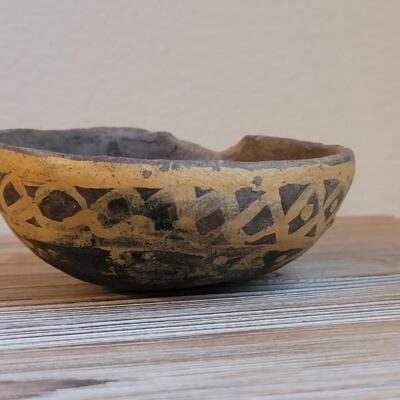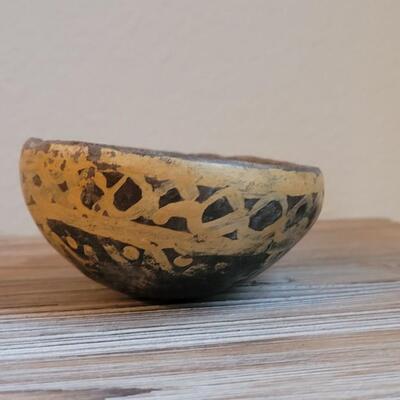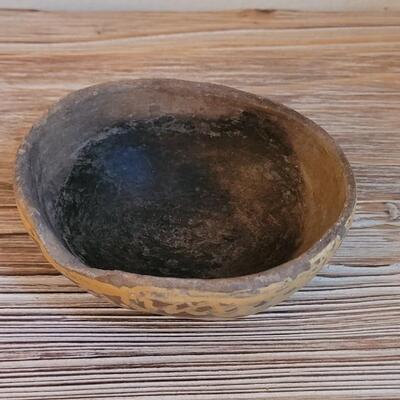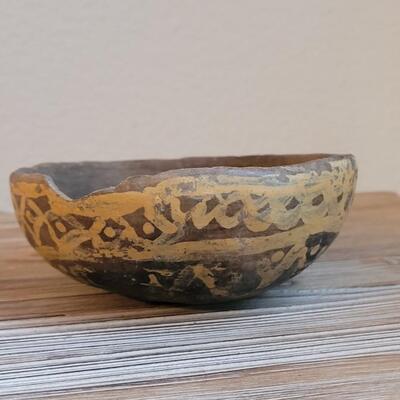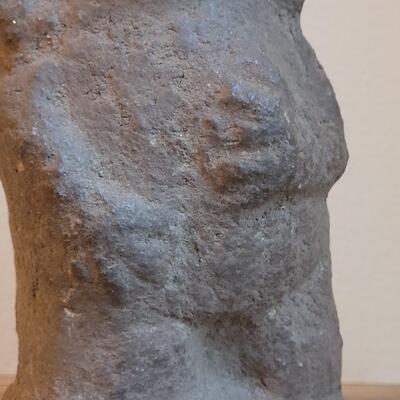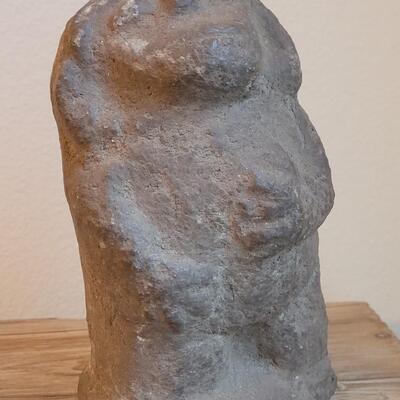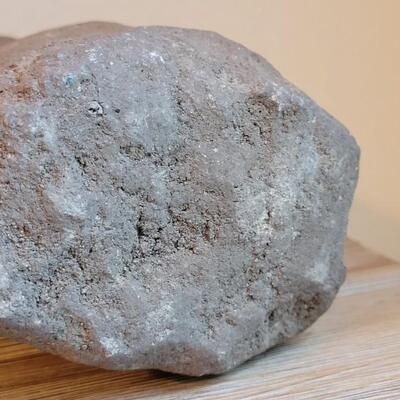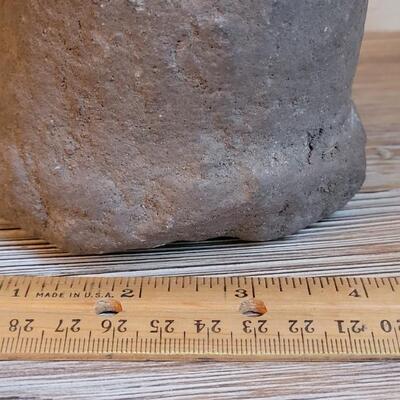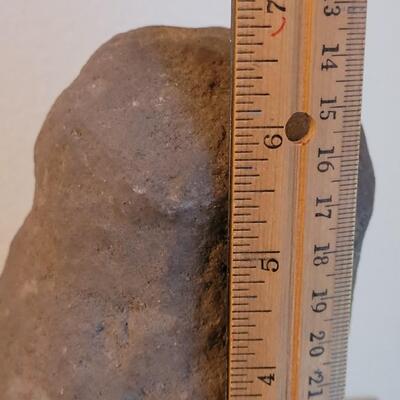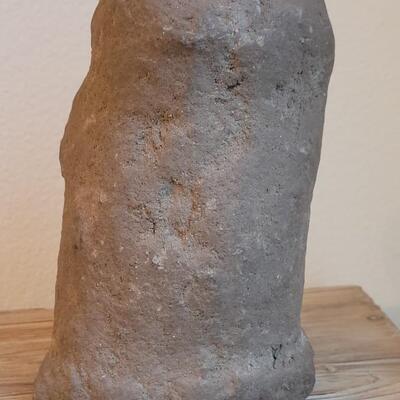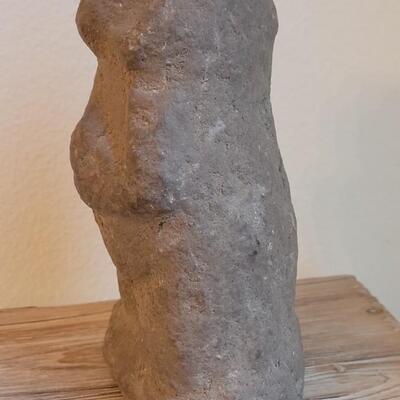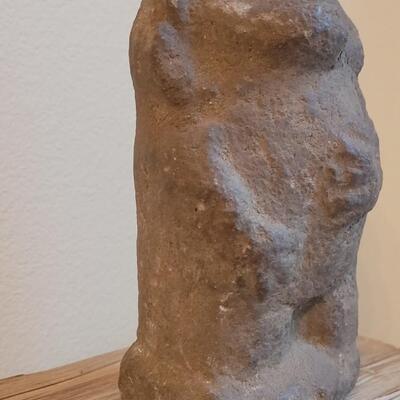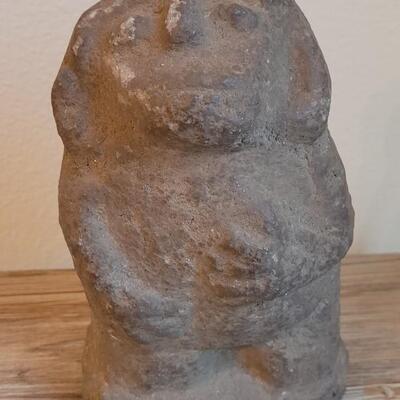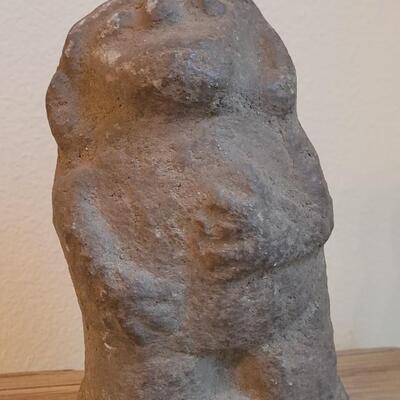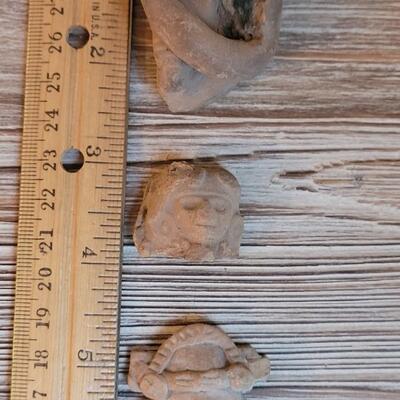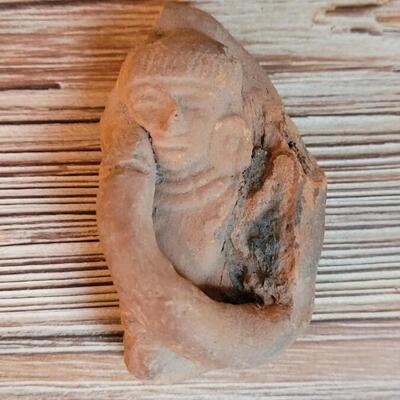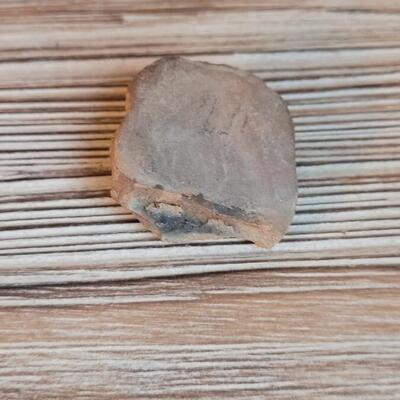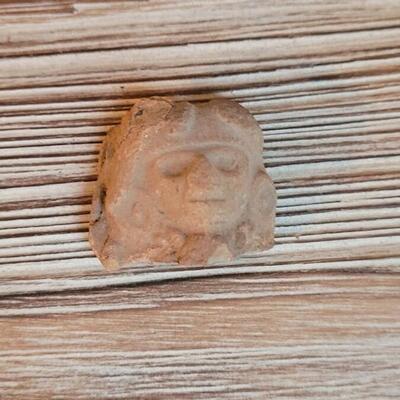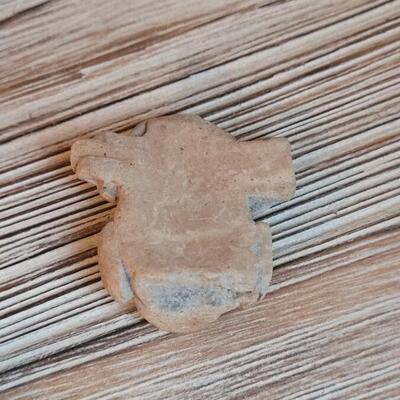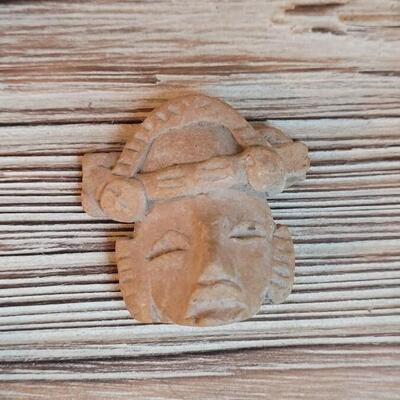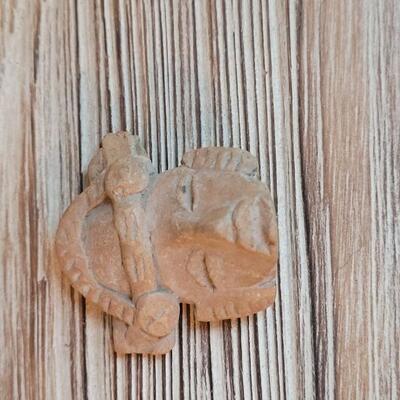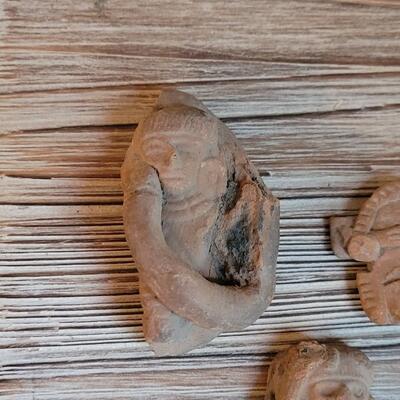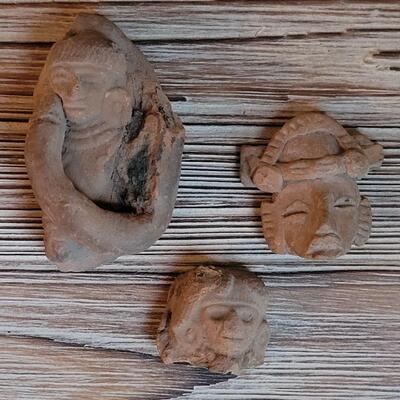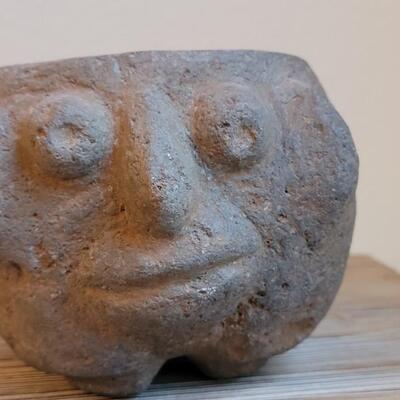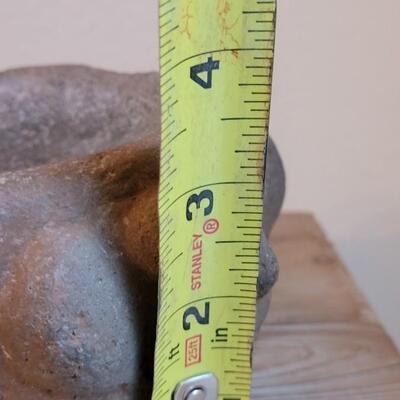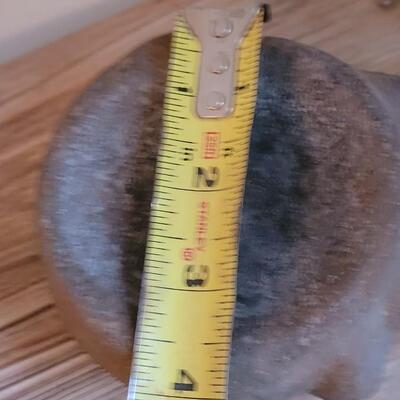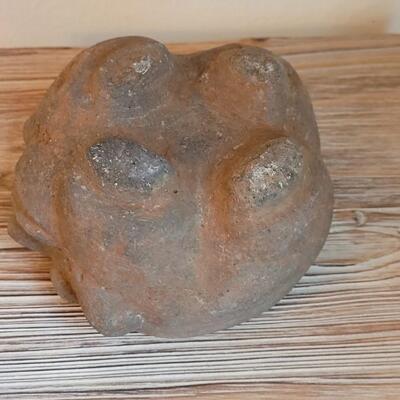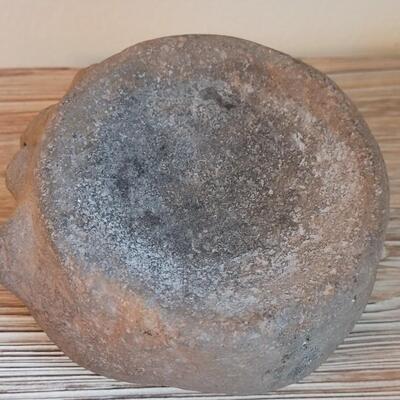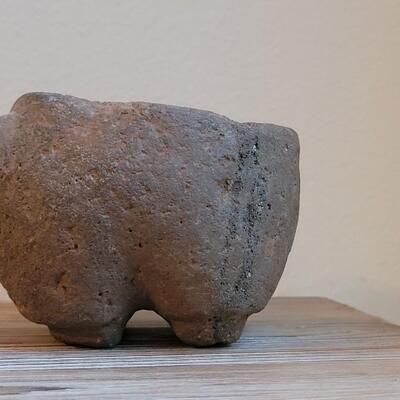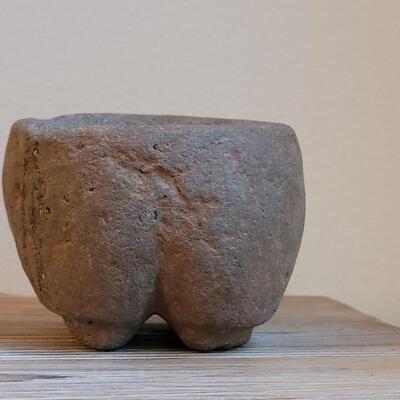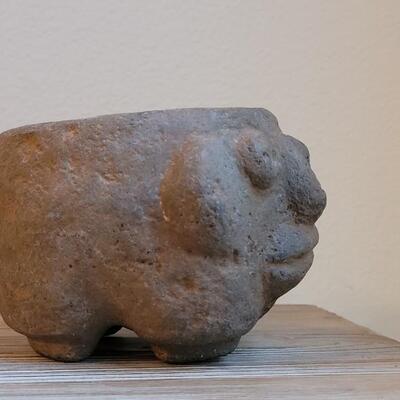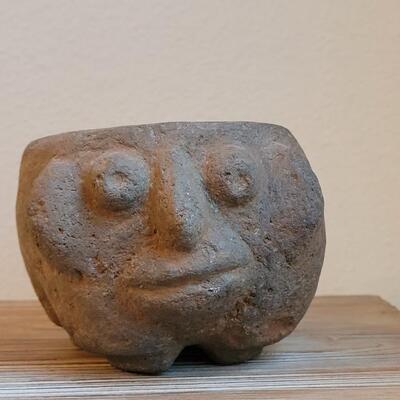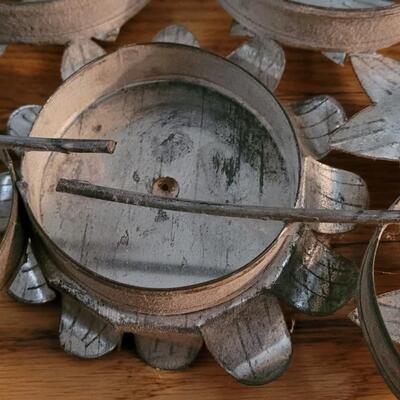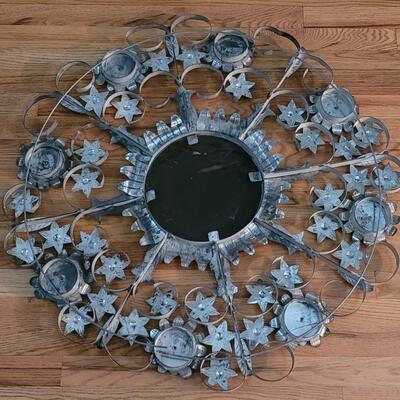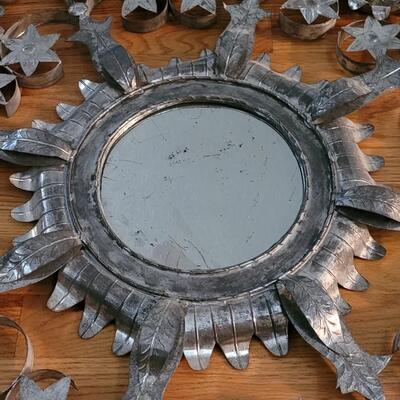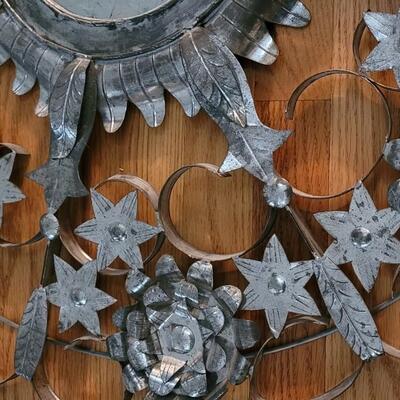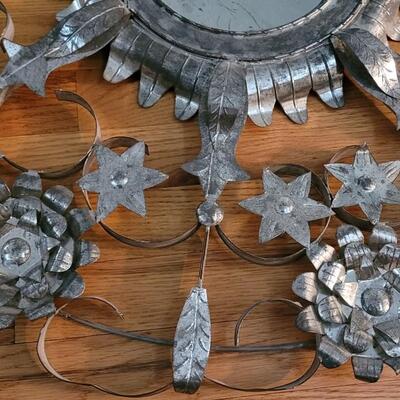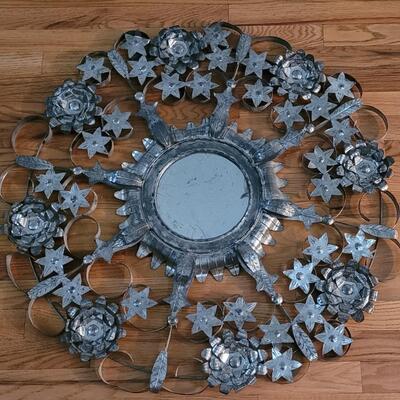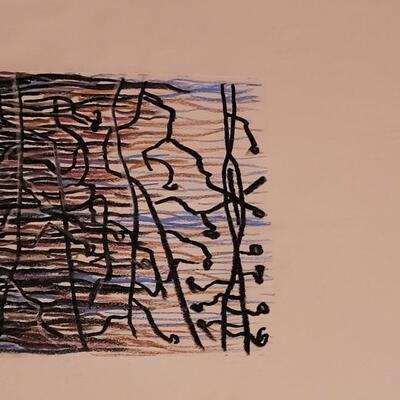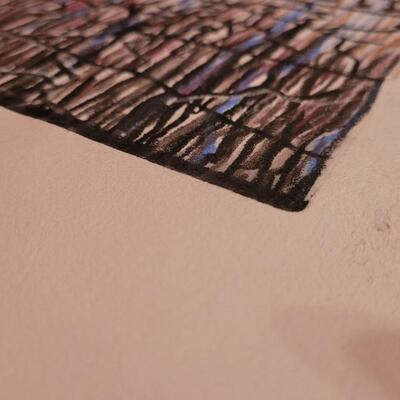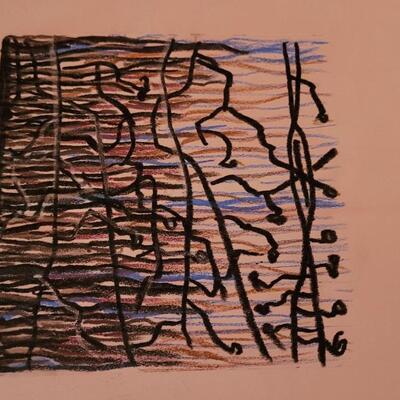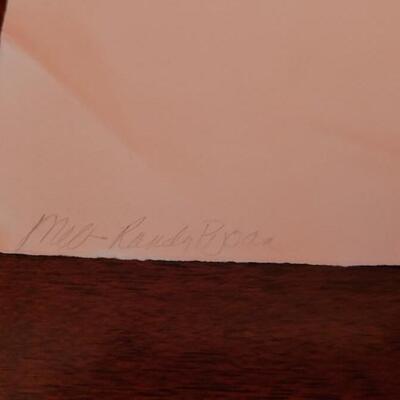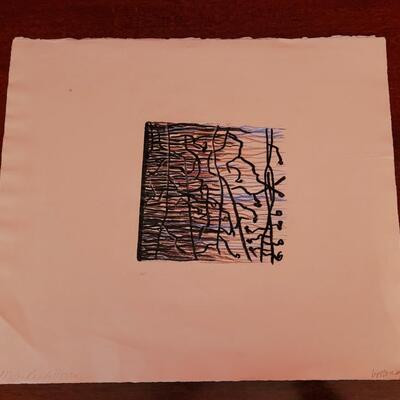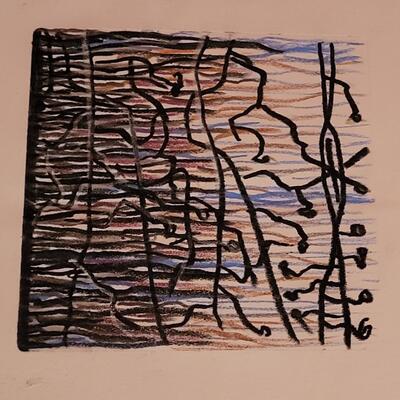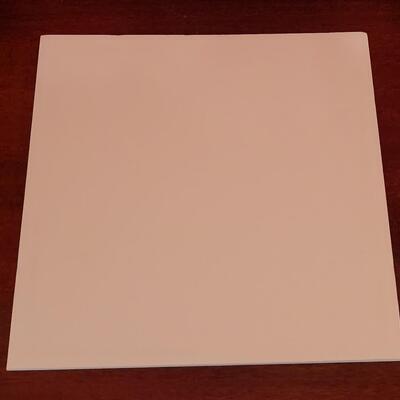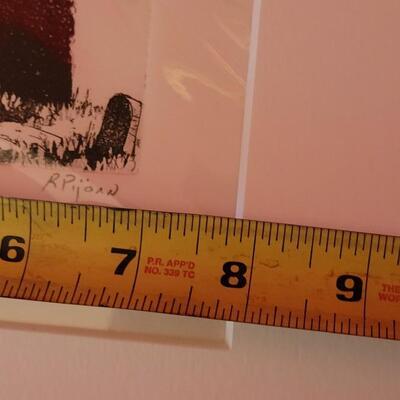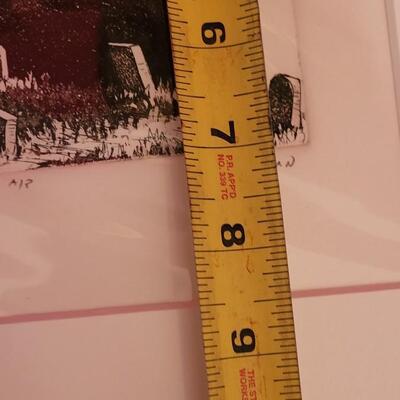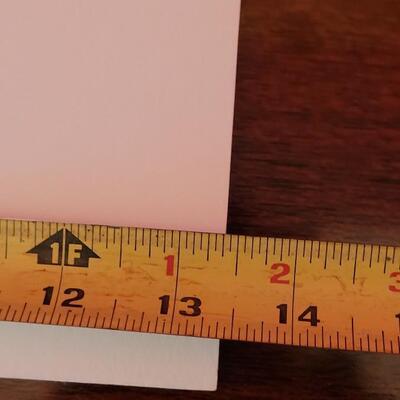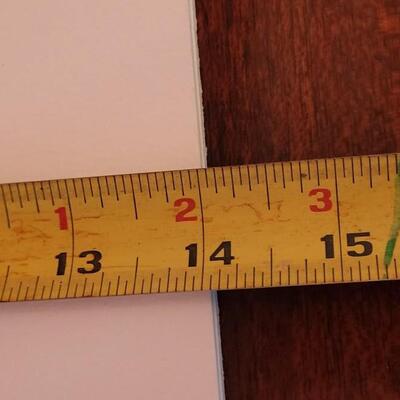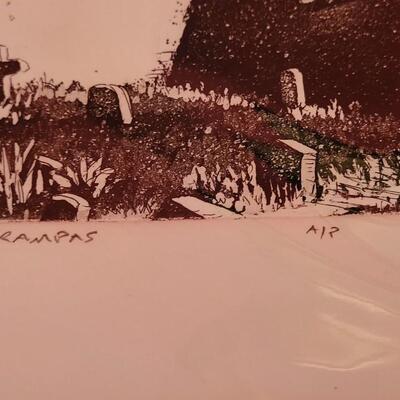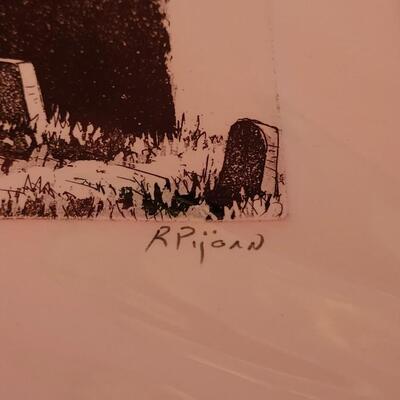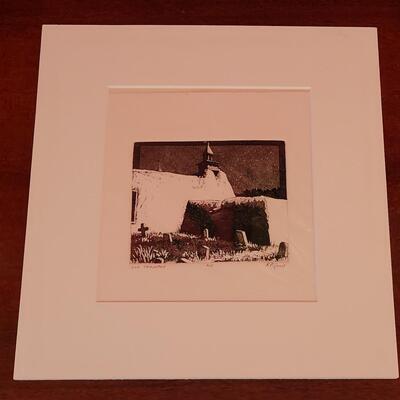-
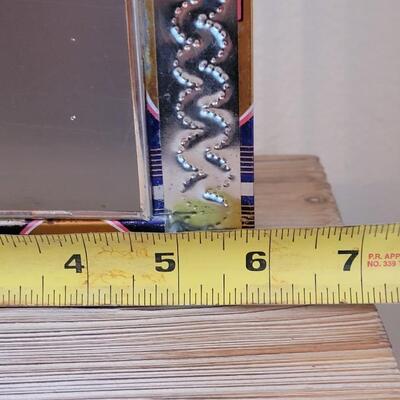
Made in Mexico. 2134 / 2244 sold -
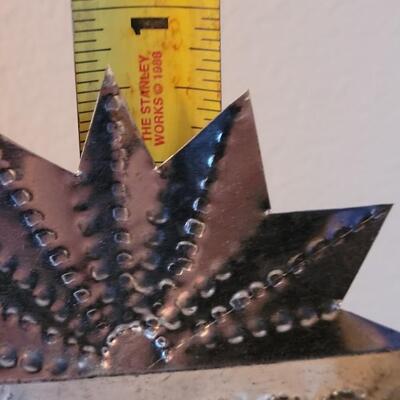
Made in Mexico. 2135 / 2244 sold -
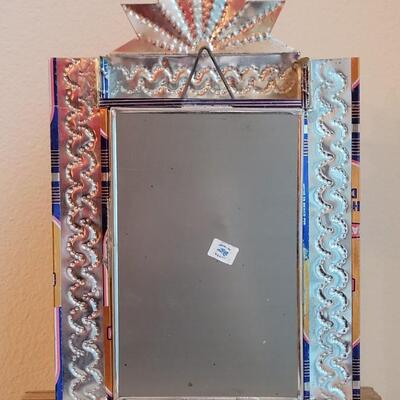
Made in Mexico. 2136 / 2244 sold -
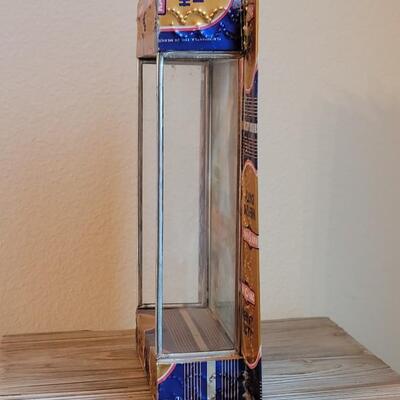
Made in Mexico. 2137 / 2244 sold -
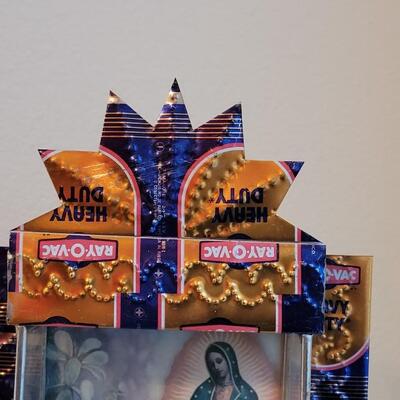
Made in Mexico. 2138 / 2244 sold -
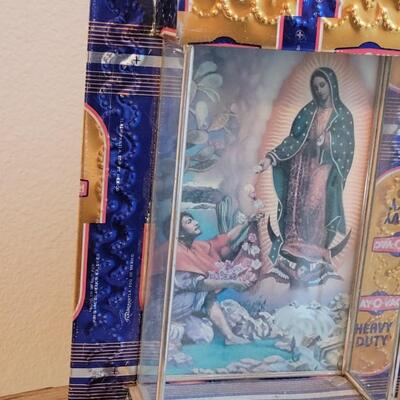
Made in Mexico. 2139 / 2244 sold -
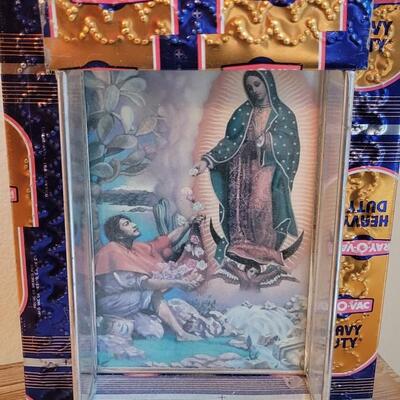
Made in Mexico. 2140 / 2244 sold -
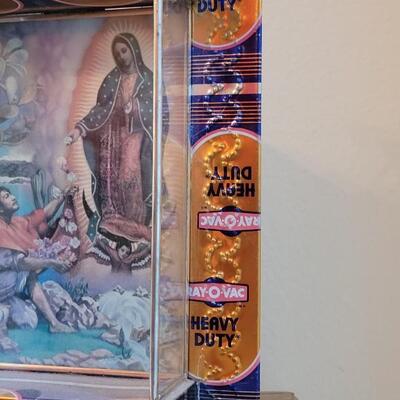
Made in Mexico. 2141 / 2244 sold -
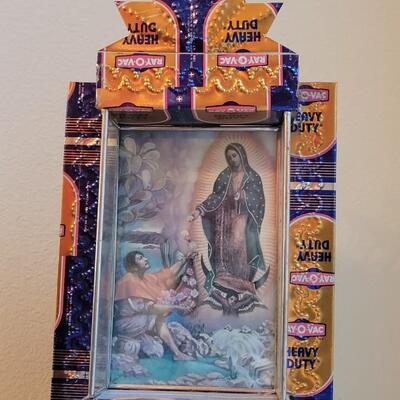
Made in Mexico. 2142 / 2244 sold -
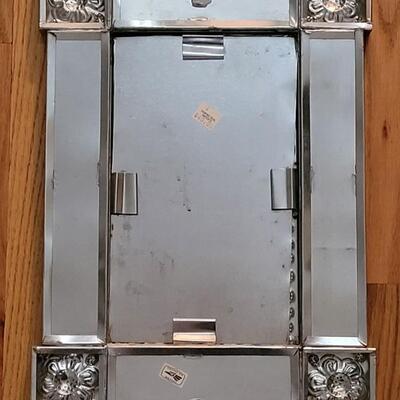
Made in Mexico 2143 / 2244 sold -
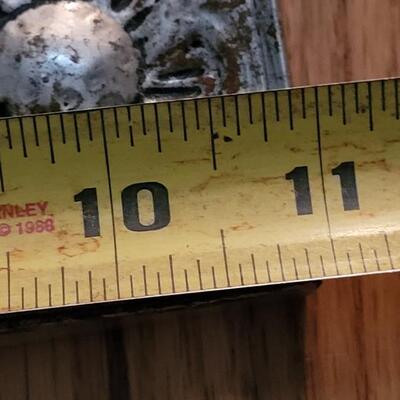
Made in Mexico 2144 / 2244 sold -
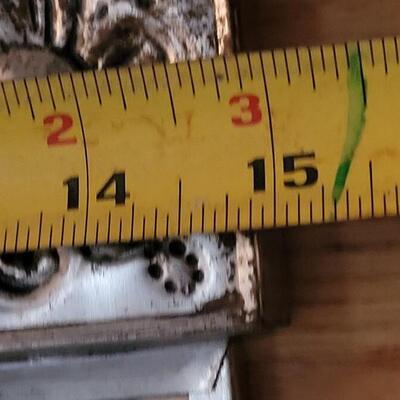
Made in Mexico 2145 / 2244 sold -
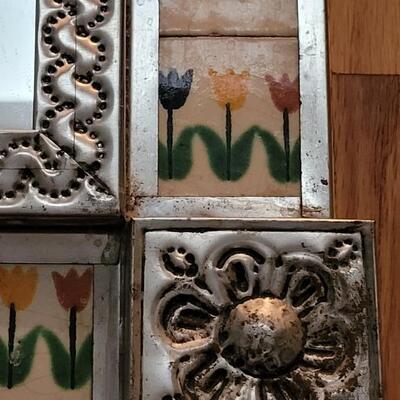
Made in Mexico 2146 / 2244 sold -
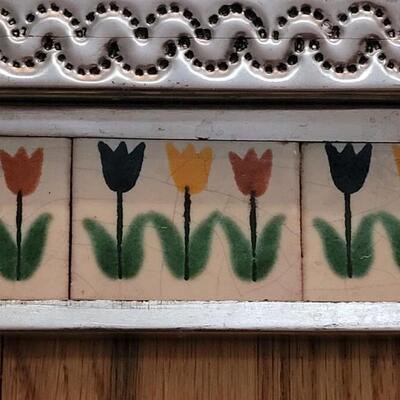
Made in Mexico 2147 / 2244 sold -
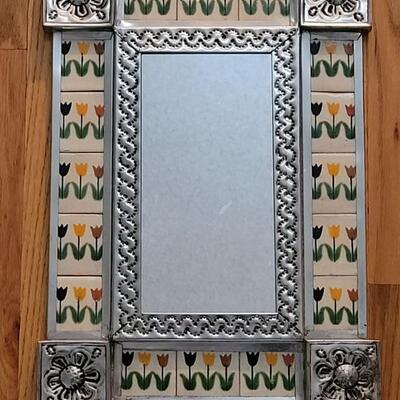
Made in Mexico 2148 / 2244 sold -
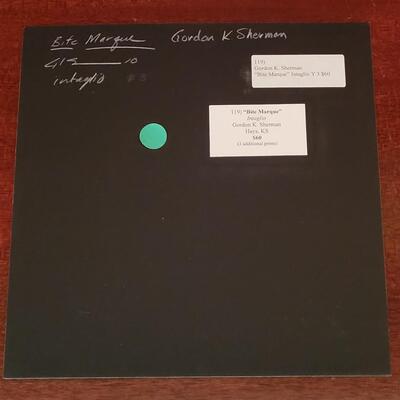
Pencil Signed and Titled 2164 / 2244 -
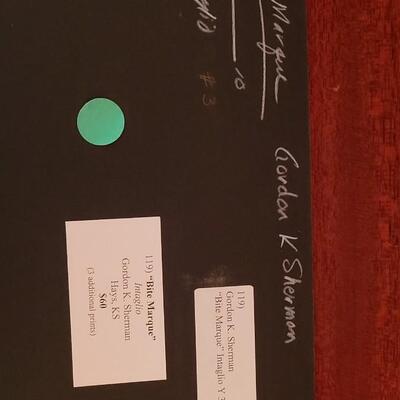
Pencil Signed and Titled 2165 / 2244 -
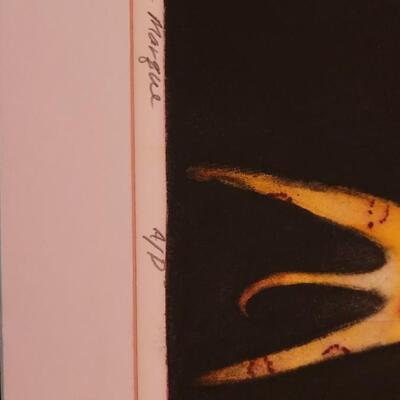
Pencil Signed and Titled 2166 / 2244 -
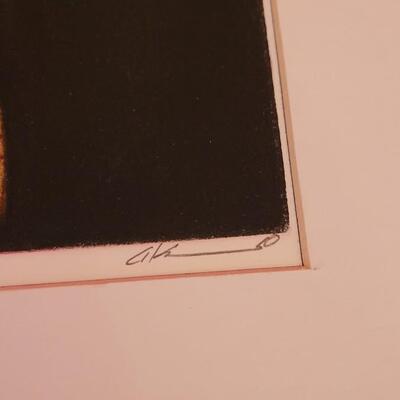
Pencil Signed and Titled 2167 / 2244 -
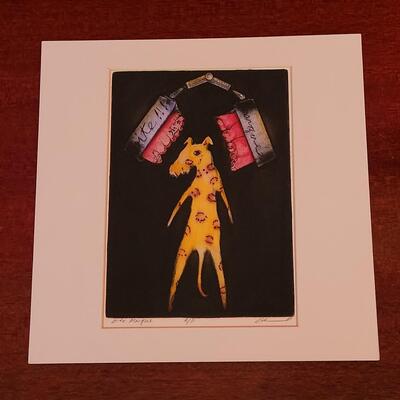
Pencil Signed and Titled 2168 / 2244 -
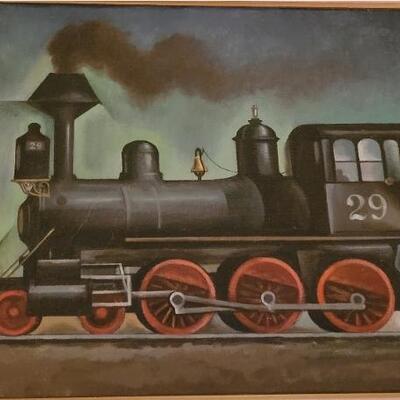
This is a fantastic example from one of the "15 Colorado Artist", William Sanderson. This artwork is open to National Bidding with packing and shipping through UPS. Sotheby's sold one of William Sanderson's oil painting in the last few years for over $16,000. Since his passing his work has risen in value. This piece is special for Colorado because of the rich Railroad history that is so much a part of this state. Through research, this piece also differs because Railroad themes were not a reoccurring theme in his work. A little background from Excerpts: William Sanderson (whose birth name was Wilhelm Tsiegelnitsky) was born August 4, 1905 in Dubbeln, Latvia, near Riga and at that time part of the Russian Empire. ... In 1948 Sanderson became a founding member of the 15 Colorado Artists who broke from the more traditional Denver Artists Guild. Excerpt: In the summer of 1943 he had his first solo exhibition in Colorado at the Denver Art Museum-Chappell House that consisted of black-and-white drawings of Army life. He also began painting watercolor scenes from memory of his previous life in the East. His two visits to Vance Kirkland’s studio in Denver’s Capitol Hill neighborhood, while stationed at Lowry, occasioned a lifelong friendship and professional association. On Sanderson’s excursion in 1943 to the Colorado Springs Fine Arts Center he met his future wife, Ruth Lambertson from Cedar Falls, Iowa, whom he married eight weeks later, initiating a union lasting forty-seven years. His fluency in Russian landed him an assignment as an interpreter with the American ground forces meeting up with the Soviet Army marching westward toward Berlin in the last months of World War II. His impressions and photos of the bombed-out city formed the basis of his montage, Berlin 1945, painted in Denver in 1947. Its palette and collage-like quality and that of some of his other paintings from this period reflect the influence of American modernist, Stuart Davis. Following his military discharge and some brief design work for the Kistler Stationery Company and the A.B. Hirschfeld Press in Denver, Sanderson swapped commercial art for academia in 1946 when Vance Kirkland hired him as Assistant Professor of Advertising Design at the University of Denver, which subject he taught until retiring in 1972. Along with Kirkland and other faculty artists, he became a charter member of the 15 Colorado Artists. Founded in 1948, the group comprised some of the state’s leading contemporary artists seeking to distance themselves from much of the traditional imagery then being produced and exhibited in Denver and elsewhere. Reflecting the viewpoint of his fellow charter members Sanderson said, “I’m very taken with the nature scenes in this region, but it’s not the function of the artist to paint them when there are photographers around.†Paraphrasing Picasso, the leading representative of contemporary art at that time, he added: “The painting is the artist’s representation of what nature is not.†The financial security and stability of his teaching position at the University of Denver (DU) gave him the freedom to develop his easel painting. He produced a large body of oils and watercolors in both stylized realism and surrealism depicting, respectively, Colorado-inspired subject matter and social criticism of modern life and industrial civilization. One of his first canvases, Steamship Ruth, titled in honor of his wife and incorporating elements remembered from the port of Rostov in Russia has large, precisely-arranged areas of flat color with crisp edges seen in many of his Colorado paintings in the 1950s and 1960s. Similarly, Mountain Rhythm employs a bright palette and undulating lines, conveying his fascination with the overall composition of irregular mountain and cloud shapes. Trailer Park near the foothills west of Denver, provided abundant material for a geometric form study, while Composition with Fried Eggs in the Denver Art Museum’s collection essentially is a semi-cubistic arrangement of interlocking planes and spaces that was reproduced in the August 25, 1952, issue of Time Magazine. His work was also shown in group exhibitions outside Colorado at the Dallas Fine Art Museum, Museum of New Mexico (now, New Mexico Museum of Art) in Santa Fe, Joslyn Memorial Museum in Omaha, San Francisco Art Association, Salt Lake City Art Center and the Cedar City Art Museum Association in Utah. The positive notice accorded his work in the early fifties earned him a commission from the Ford Motor Company to illustrate an article, Fort Garland, by Marshall Sprague in the June 1954 issue of Ford Times. (Similar commissions were also given at that time to Denver’s Vance Kirkland and Richard Sorby.) ☆☆☆☆☆☆ Quotes of Sanderson: I’ve done hard-edge paintings because I was always interested in typography and shapes and forms but then I finally decided I wanted to make…a record of things before they are completely inundated by shopping centers, highways and pizza parlors….The isolation, the loneliness of life on the plains is not that dissimilar from the isolation and loneliness one feels living in New York City. His output assumed a more regionalist style as his new environment challenged him to paint the broad panorama of Colorado’s high plains dominated by the sky, clouds, seasonal changes, windmills and ranches. In the process, he took on the “myth of the West†with his own brand of humor and irreverence: I have a dislike for what usually passes as Western art…It’s terribly repetitious. Most of it is just an imitation of what Russell and Remington did…What I’ve painted about the West is not reality; I’ve painted the West as it never was and I know it. I’ve taken the romantic, wild image – bad men, shootouts in the street – done it in an exaggerated style. Some of the subject matter are clichés – and worn out clichés at that. But I’m not mocking the West so much as I’m exaggerating it. 2169 / 2244 -
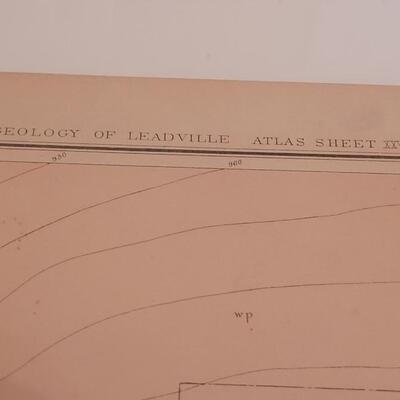
This is a fantastic example from one of the "15 Colorado Artist", William Sanderson. This artwork is open to National Bidding with packing and shipping through UPS. Sotheby's sold one of William Sanderson's oil painting in the last few years for over $16,000. Since his passing his work has risen in value. This piece is special for Colorado because of the rich Railroad history that is so much a part of this state. Through research, this piece also differs because Railroad themes were not a reoccurring theme in his work. A little background from Excerpts: William Sanderson (whose birth name was Wilhelm Tsiegelnitsky) was born August 4, 1905 in Dubbeln, Latvia, near Riga and at that time part of the Russian Empire. ... In 1948 Sanderson became a founding member of the 15 Colorado Artists who broke from the more traditional Denver Artists Guild. Excerpt: In the summer of 1943 he had his first solo exhibition in Colorado at the Denver Art Museum-Chappell House that consisted of black-and-white drawings of Army life. He also began painting watercolor scenes from memory of his previous life in the East. His two visits to Vance Kirkland’s studio in Denver’s Capitol Hill neighborhood, while stationed at Lowry, occasioned a lifelong friendship and professional association. On Sanderson’s excursion in 1943 to the Colorado Springs Fine Arts Center he met his future wife, Ruth Lambertson from Cedar Falls, Iowa, whom he married eight weeks later, initiating a union lasting forty-seven years. His fluency in Russian landed him an assignment as an interpreter with the American ground forces meeting up with the Soviet Army marching westward toward Berlin in the last months of World War II. His impressions and photos of the bombed-out city formed the basis of his montage, Berlin 1945, painted in Denver in 1947. Its palette and collage-like quality and that of some of his other paintings from this period reflect the influence of American modernist, Stuart Davis. Following his military discharge and some brief design work for the Kistler Stationery Company and the A.B. Hirschfeld Press in Denver, Sanderson swapped commercial art for academia in 1946 when Vance Kirkland hired him as Assistant Professor of Advertising Design at the University of Denver, which subject he taught until retiring in 1972. Along with Kirkland and other faculty artists, he became a charter member of the 15 Colorado Artists. Founded in 1948, the group comprised some of the state’s leading contemporary artists seeking to distance themselves from much of the traditional imagery then being produced and exhibited in Denver and elsewhere. Reflecting the viewpoint of his fellow charter members Sanderson said, “I’m very taken with the nature scenes in this region, but it’s not the function of the artist to paint them when there are photographers around.†Paraphrasing Picasso, the leading representative of contemporary art at that time, he added: “The painting is the artist’s representation of what nature is not.†The financial security and stability of his teaching position at the University of Denver (DU) gave him the freedom to develop his easel painting. He produced a large body of oils and watercolors in both stylized realism and surrealism depicting, respectively, Colorado-inspired subject matter and social criticism of modern life and industrial civilization. One of his first canvases, Steamship Ruth, titled in honor of his wife and incorporating elements remembered from the port of Rostov in Russia has large, precisely-arranged areas of flat color with crisp edges seen in many of his Colorado paintings in the 1950s and 1960s. Similarly, Mountain Rhythm employs a bright palette and undulating lines, conveying his fascination with the overall composition of irregular mountain and cloud shapes. Trailer Park near the foothills west of Denver, provided abundant material for a geometric form study, while Composition with Fried Eggs in the Denver Art Museum’s collection essentially is a semi-cubistic arrangement of interlocking planes and spaces that was reproduced in the August 25, 1952, issue of Time Magazine. His work was also shown in group exhibitions outside Colorado at the Dallas Fine Art Museum, Museum of New Mexico (now, New Mexico Museum of Art) in Santa Fe, Joslyn Memorial Museum in Omaha, San Francisco Art Association, Salt Lake City Art Center and the Cedar City Art Museum Association in Utah. The positive notice accorded his work in the early fifties earned him a commission from the Ford Motor Company to illustrate an article, Fort Garland, by Marshall Sprague in the June 1954 issue of Ford Times. (Similar commissions were also given at that time to Denver’s Vance Kirkland and Richard Sorby.) ☆☆☆☆☆☆ Quotes of Sanderson: I’ve done hard-edge paintings because I was always interested in typography and shapes and forms but then I finally decided I wanted to make…a record of things before they are completely inundated by shopping centers, highways and pizza parlors….The isolation, the loneliness of life on the plains is not that dissimilar from the isolation and loneliness one feels living in New York City. His output assumed a more regionalist style as his new environment challenged him to paint the broad panorama of Colorado’s high plains dominated by the sky, clouds, seasonal changes, windmills and ranches. In the process, he took on the “myth of the West†with his own brand of humor and irreverence: I have a dislike for what usually passes as Western art…It’s terribly repetitious. Most of it is just an imitation of what Russell and Remington did…What I’ve painted about the West is not reality; I’ve painted the West as it never was and I know it. I’ve taken the romantic, wild image – bad men, shootouts in the street – done it in an exaggerated style. Some of the subject matter are clichés – and worn out clichés at that. But I’m not mocking the West so much as I’m exaggerating it. 2170 / 2244 -
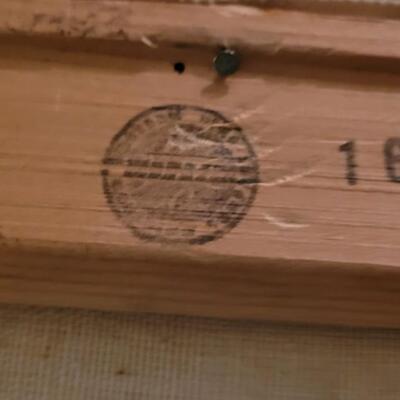
This is a fantastic example from one of the "15 Colorado Artist", William Sanderson. This artwork is open to National Bidding with packing and shipping through UPS. Sotheby's sold one of William Sanderson's oil painting in the last few years for over $16,000. Since his passing his work has risen in value. This piece is special for Colorado because of the rich Railroad history that is so much a part of this state. Through research, this piece also differs because Railroad themes were not a reoccurring theme in his work. A little background from Excerpts: William Sanderson (whose birth name was Wilhelm Tsiegelnitsky) was born August 4, 1905 in Dubbeln, Latvia, near Riga and at that time part of the Russian Empire. ... In 1948 Sanderson became a founding member of the 15 Colorado Artists who broke from the more traditional Denver Artists Guild. Excerpt: In the summer of 1943 he had his first solo exhibition in Colorado at the Denver Art Museum-Chappell House that consisted of black-and-white drawings of Army life. He also began painting watercolor scenes from memory of his previous life in the East. His two visits to Vance Kirkland’s studio in Denver’s Capitol Hill neighborhood, while stationed at Lowry, occasioned a lifelong friendship and professional association. On Sanderson’s excursion in 1943 to the Colorado Springs Fine Arts Center he met his future wife, Ruth Lambertson from Cedar Falls, Iowa, whom he married eight weeks later, initiating a union lasting forty-seven years. His fluency in Russian landed him an assignment as an interpreter with the American ground forces meeting up with the Soviet Army marching westward toward Berlin in the last months of World War II. His impressions and photos of the bombed-out city formed the basis of his montage, Berlin 1945, painted in Denver in 1947. Its palette and collage-like quality and that of some of his other paintings from this period reflect the influence of American modernist, Stuart Davis. Following his military discharge and some brief design work for the Kistler Stationery Company and the A.B. Hirschfeld Press in Denver, Sanderson swapped commercial art for academia in 1946 when Vance Kirkland hired him as Assistant Professor of Advertising Design at the University of Denver, which subject he taught until retiring in 1972. Along with Kirkland and other faculty artists, he became a charter member of the 15 Colorado Artists. Founded in 1948, the group comprised some of the state’s leading contemporary artists seeking to distance themselves from much of the traditional imagery then being produced and exhibited in Denver and elsewhere. Reflecting the viewpoint of his fellow charter members Sanderson said, “I’m very taken with the nature scenes in this region, but it’s not the function of the artist to paint them when there are photographers around.†Paraphrasing Picasso, the leading representative of contemporary art at that time, he added: “The painting is the artist’s representation of what nature is not.†The financial security and stability of his teaching position at the University of Denver (DU) gave him the freedom to develop his easel painting. He produced a large body of oils and watercolors in both stylized realism and surrealism depicting, respectively, Colorado-inspired subject matter and social criticism of modern life and industrial civilization. One of his first canvases, Steamship Ruth, titled in honor of his wife and incorporating elements remembered from the port of Rostov in Russia has large, precisely-arranged areas of flat color with crisp edges seen in many of his Colorado paintings in the 1950s and 1960s. Similarly, Mountain Rhythm employs a bright palette and undulating lines, conveying his fascination with the overall composition of irregular mountain and cloud shapes. Trailer Park near the foothills west of Denver, provided abundant material for a geometric form study, while Composition with Fried Eggs in the Denver Art Museum’s collection essentially is a semi-cubistic arrangement of interlocking planes and spaces that was reproduced in the August 25, 1952, issue of Time Magazine. His work was also shown in group exhibitions outside Colorado at the Dallas Fine Art Museum, Museum of New Mexico (now, New Mexico Museum of Art) in Santa Fe, Joslyn Memorial Museum in Omaha, San Francisco Art Association, Salt Lake City Art Center and the Cedar City Art Museum Association in Utah. The positive notice accorded his work in the early fifties earned him a commission from the Ford Motor Company to illustrate an article, Fort Garland, by Marshall Sprague in the June 1954 issue of Ford Times. (Similar commissions were also given at that time to Denver’s Vance Kirkland and Richard Sorby.) ☆☆☆☆☆☆ Quotes of Sanderson: I’ve done hard-edge paintings because I was always interested in typography and shapes and forms but then I finally decided I wanted to make…a record of things before they are completely inundated by shopping centers, highways and pizza parlors….The isolation, the loneliness of life on the plains is not that dissimilar from the isolation and loneliness one feels living in New York City. His output assumed a more regionalist style as his new environment challenged him to paint the broad panorama of Colorado’s high plains dominated by the sky, clouds, seasonal changes, windmills and ranches. In the process, he took on the “myth of the West†with his own brand of humor and irreverence: I have a dislike for what usually passes as Western art…It’s terribly repetitious. Most of it is just an imitation of what Russell and Remington did…What I’ve painted about the West is not reality; I’ve painted the West as it never was and I know it. I’ve taken the romantic, wild image – bad men, shootouts in the street – done it in an exaggerated style. Some of the subject matter are clichés – and worn out clichés at that. But I’m not mocking the West so much as I’m exaggerating it. 2171 / 2244 -
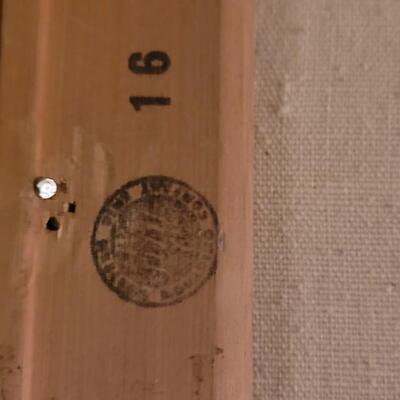
This is a fantastic example from one of the "15 Colorado Artist", William Sanderson. This artwork is open to National Bidding with packing and shipping through UPS. Sotheby's sold one of William Sanderson's oil painting in the last few years for over $16,000. Since his passing his work has risen in value. This piece is special for Colorado because of the rich Railroad history that is so much a part of this state. Through research, this piece also differs because Railroad themes were not a reoccurring theme in his work. A little background from Excerpts: William Sanderson (whose birth name was Wilhelm Tsiegelnitsky) was born August 4, 1905 in Dubbeln, Latvia, near Riga and at that time part of the Russian Empire. ... In 1948 Sanderson became a founding member of the 15 Colorado Artists who broke from the more traditional Denver Artists Guild. Excerpt: In the summer of 1943 he had his first solo exhibition in Colorado at the Denver Art Museum-Chappell House that consisted of black-and-white drawings of Army life. He also began painting watercolor scenes from memory of his previous life in the East. His two visits to Vance Kirkland’s studio in Denver’s Capitol Hill neighborhood, while stationed at Lowry, occasioned a lifelong friendship and professional association. On Sanderson’s excursion in 1943 to the Colorado Springs Fine Arts Center he met his future wife, Ruth Lambertson from Cedar Falls, Iowa, whom he married eight weeks later, initiating a union lasting forty-seven years. His fluency in Russian landed him an assignment as an interpreter with the American ground forces meeting up with the Soviet Army marching westward toward Berlin in the last months of World War II. His impressions and photos of the bombed-out city formed the basis of his montage, Berlin 1945, painted in Denver in 1947. Its palette and collage-like quality and that of some of his other paintings from this period reflect the influence of American modernist, Stuart Davis. Following his military discharge and some brief design work for the Kistler Stationery Company and the A.B. Hirschfeld Press in Denver, Sanderson swapped commercial art for academia in 1946 when Vance Kirkland hired him as Assistant Professor of Advertising Design at the University of Denver, which subject he taught until retiring in 1972. Along with Kirkland and other faculty artists, he became a charter member of the 15 Colorado Artists. Founded in 1948, the group comprised some of the state’s leading contemporary artists seeking to distance themselves from much of the traditional imagery then being produced and exhibited in Denver and elsewhere. Reflecting the viewpoint of his fellow charter members Sanderson said, “I’m very taken with the nature scenes in this region, but it’s not the function of the artist to paint them when there are photographers around.†Paraphrasing Picasso, the leading representative of contemporary art at that time, he added: “The painting is the artist’s representation of what nature is not.†The financial security and stability of his teaching position at the University of Denver (DU) gave him the freedom to develop his easel painting. He produced a large body of oils and watercolors in both stylized realism and surrealism depicting, respectively, Colorado-inspired subject matter and social criticism of modern life and industrial civilization. One of his first canvases, Steamship Ruth, titled in honor of his wife and incorporating elements remembered from the port of Rostov in Russia has large, precisely-arranged areas of flat color with crisp edges seen in many of his Colorado paintings in the 1950s and 1960s. Similarly, Mountain Rhythm employs a bright palette and undulating lines, conveying his fascination with the overall composition of irregular mountain and cloud shapes. Trailer Park near the foothills west of Denver, provided abundant material for a geometric form study, while Composition with Fried Eggs in the Denver Art Museum’s collection essentially is a semi-cubistic arrangement of interlocking planes and spaces that was reproduced in the August 25, 1952, issue of Time Magazine. His work was also shown in group exhibitions outside Colorado at the Dallas Fine Art Museum, Museum of New Mexico (now, New Mexico Museum of Art) in Santa Fe, Joslyn Memorial Museum in Omaha, San Francisco Art Association, Salt Lake City Art Center and the Cedar City Art Museum Association in Utah. The positive notice accorded his work in the early fifties earned him a commission from the Ford Motor Company to illustrate an article, Fort Garland, by Marshall Sprague in the June 1954 issue of Ford Times. (Similar commissions were also given at that time to Denver’s Vance Kirkland and Richard Sorby.) ☆☆☆☆☆☆ Quotes of Sanderson: I’ve done hard-edge paintings because I was always interested in typography and shapes and forms but then I finally decided I wanted to make…a record of things before they are completely inundated by shopping centers, highways and pizza parlors….The isolation, the loneliness of life on the plains is not that dissimilar from the isolation and loneliness one feels living in New York City. His output assumed a more regionalist style as his new environment challenged him to paint the broad panorama of Colorado’s high plains dominated by the sky, clouds, seasonal changes, windmills and ranches. In the process, he took on the “myth of the West†with his own brand of humor and irreverence: I have a dislike for what usually passes as Western art…It’s terribly repetitious. Most of it is just an imitation of what Russell and Remington did…What I’ve painted about the West is not reality; I’ve painted the West as it never was and I know it. I’ve taken the romantic, wild image – bad men, shootouts in the street – done it in an exaggerated style. Some of the subject matter are clichés – and worn out clichés at that. But I’m not mocking the West so much as I’m exaggerating it. 2172 / 2244 -
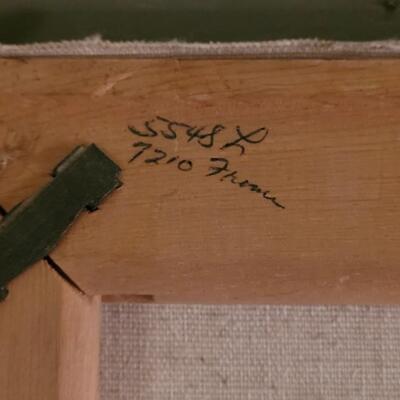
This is a fantastic example from one of the "15 Colorado Artist", William Sanderson. This artwork is open to National Bidding with packing and shipping through UPS. Sotheby's sold one of William Sanderson's oil painting in the last few years for over $16,000. Since his passing his work has risen in value. This piece is special for Colorado because of the rich Railroad history that is so much a part of this state. Through research, this piece also differs because Railroad themes were not a reoccurring theme in his work. A little background from Excerpts: William Sanderson (whose birth name was Wilhelm Tsiegelnitsky) was born August 4, 1905 in Dubbeln, Latvia, near Riga and at that time part of the Russian Empire. ... In 1948 Sanderson became a founding member of the 15 Colorado Artists who broke from the more traditional Denver Artists Guild. Excerpt: In the summer of 1943 he had his first solo exhibition in Colorado at the Denver Art Museum-Chappell House that consisted of black-and-white drawings of Army life. He also began painting watercolor scenes from memory of his previous life in the East. His two visits to Vance Kirkland’s studio in Denver’s Capitol Hill neighborhood, while stationed at Lowry, occasioned a lifelong friendship and professional association. On Sanderson’s excursion in 1943 to the Colorado Springs Fine Arts Center he met his future wife, Ruth Lambertson from Cedar Falls, Iowa, whom he married eight weeks later, initiating a union lasting forty-seven years. His fluency in Russian landed him an assignment as an interpreter with the American ground forces meeting up with the Soviet Army marching westward toward Berlin in the last months of World War II. His impressions and photos of the bombed-out city formed the basis of his montage, Berlin 1945, painted in Denver in 1947. Its palette and collage-like quality and that of some of his other paintings from this period reflect the influence of American modernist, Stuart Davis. Following his military discharge and some brief design work for the Kistler Stationery Company and the A.B. Hirschfeld Press in Denver, Sanderson swapped commercial art for academia in 1946 when Vance Kirkland hired him as Assistant Professor of Advertising Design at the University of Denver, which subject he taught until retiring in 1972. Along with Kirkland and other faculty artists, he became a charter member of the 15 Colorado Artists. Founded in 1948, the group comprised some of the state’s leading contemporary artists seeking to distance themselves from much of the traditional imagery then being produced and exhibited in Denver and elsewhere. Reflecting the viewpoint of his fellow charter members Sanderson said, “I’m very taken with the nature scenes in this region, but it’s not the function of the artist to paint them when there are photographers around.†Paraphrasing Picasso, the leading representative of contemporary art at that time, he added: “The painting is the artist’s representation of what nature is not.†The financial security and stability of his teaching position at the University of Denver (DU) gave him the freedom to develop his easel painting. He produced a large body of oils and watercolors in both stylized realism and surrealism depicting, respectively, Colorado-inspired subject matter and social criticism of modern life and industrial civilization. One of his first canvases, Steamship Ruth, titled in honor of his wife and incorporating elements remembered from the port of Rostov in Russia has large, precisely-arranged areas of flat color with crisp edges seen in many of his Colorado paintings in the 1950s and 1960s. Similarly, Mountain Rhythm employs a bright palette and undulating lines, conveying his fascination with the overall composition of irregular mountain and cloud shapes. Trailer Park near the foothills west of Denver, provided abundant material for a geometric form study, while Composition with Fried Eggs in the Denver Art Museum’s collection essentially is a semi-cubistic arrangement of interlocking planes and spaces that was reproduced in the August 25, 1952, issue of Time Magazine. His work was also shown in group exhibitions outside Colorado at the Dallas Fine Art Museum, Museum of New Mexico (now, New Mexico Museum of Art) in Santa Fe, Joslyn Memorial Museum in Omaha, San Francisco Art Association, Salt Lake City Art Center and the Cedar City Art Museum Association in Utah. The positive notice accorded his work in the early fifties earned him a commission from the Ford Motor Company to illustrate an article, Fort Garland, by Marshall Sprague in the June 1954 issue of Ford Times. (Similar commissions were also given at that time to Denver’s Vance Kirkland and Richard Sorby.) ☆☆☆☆☆☆ Quotes of Sanderson: I’ve done hard-edge paintings because I was always interested in typography and shapes and forms but then I finally decided I wanted to make…a record of things before they are completely inundated by shopping centers, highways and pizza parlors….The isolation, the loneliness of life on the plains is not that dissimilar from the isolation and loneliness one feels living in New York City. His output assumed a more regionalist style as his new environment challenged him to paint the broad panorama of Colorado’s high plains dominated by the sky, clouds, seasonal changes, windmills and ranches. In the process, he took on the “myth of the West†with his own brand of humor and irreverence: I have a dislike for what usually passes as Western art…It’s terribly repetitious. Most of it is just an imitation of what Russell and Remington did…What I’ve painted about the West is not reality; I’ve painted the West as it never was and I know it. I’ve taken the romantic, wild image – bad men, shootouts in the street – done it in an exaggerated style. Some of the subject matter are clichés – and worn out clichés at that. But I’m not mocking the West so much as I’m exaggerating it. 2173 / 2244 -
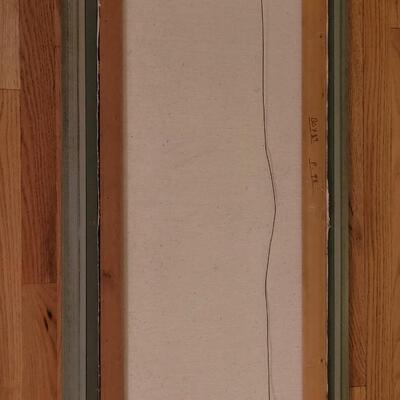
This is a fantastic example from one of the "15 Colorado Artist", William Sanderson. This artwork is open to National Bidding with packing and shipping through UPS. Sotheby's sold one of William Sanderson's oil painting in the last few years for over $16,000. Since his passing his work has risen in value. This piece is special for Colorado because of the rich Railroad history that is so much a part of this state. Through research, this piece also differs because Railroad themes were not a reoccurring theme in his work. A little background from Excerpts: William Sanderson (whose birth name was Wilhelm Tsiegelnitsky) was born August 4, 1905 in Dubbeln, Latvia, near Riga and at that time part of the Russian Empire. ... In 1948 Sanderson became a founding member of the 15 Colorado Artists who broke from the more traditional Denver Artists Guild. Excerpt: In the summer of 1943 he had his first solo exhibition in Colorado at the Denver Art Museum-Chappell House that consisted of black-and-white drawings of Army life. He also began painting watercolor scenes from memory of his previous life in the East. His two visits to Vance Kirkland’s studio in Denver’s Capitol Hill neighborhood, while stationed at Lowry, occasioned a lifelong friendship and professional association. On Sanderson’s excursion in 1943 to the Colorado Springs Fine Arts Center he met his future wife, Ruth Lambertson from Cedar Falls, Iowa, whom he married eight weeks later, initiating a union lasting forty-seven years. His fluency in Russian landed him an assignment as an interpreter with the American ground forces meeting up with the Soviet Army marching westward toward Berlin in the last months of World War II. His impressions and photos of the bombed-out city formed the basis of his montage, Berlin 1945, painted in Denver in 1947. Its palette and collage-like quality and that of some of his other paintings from this period reflect the influence of American modernist, Stuart Davis. Following his military discharge and some brief design work for the Kistler Stationery Company and the A.B. Hirschfeld Press in Denver, Sanderson swapped commercial art for academia in 1946 when Vance Kirkland hired him as Assistant Professor of Advertising Design at the University of Denver, which subject he taught until retiring in 1972. Along with Kirkland and other faculty artists, he became a charter member of the 15 Colorado Artists. Founded in 1948, the group comprised some of the state’s leading contemporary artists seeking to distance themselves from much of the traditional imagery then being produced and exhibited in Denver and elsewhere. Reflecting the viewpoint of his fellow charter members Sanderson said, “I’m very taken with the nature scenes in this region, but it’s not the function of the artist to paint them when there are photographers around.†Paraphrasing Picasso, the leading representative of contemporary art at that time, he added: “The painting is the artist’s representation of what nature is not.†The financial security and stability of his teaching position at the University of Denver (DU) gave him the freedom to develop his easel painting. He produced a large body of oils and watercolors in both stylized realism and surrealism depicting, respectively, Colorado-inspired subject matter and social criticism of modern life and industrial civilization. One of his first canvases, Steamship Ruth, titled in honor of his wife and incorporating elements remembered from the port of Rostov in Russia has large, precisely-arranged areas of flat color with crisp edges seen in many of his Colorado paintings in the 1950s and 1960s. Similarly, Mountain Rhythm employs a bright palette and undulating lines, conveying his fascination with the overall composition of irregular mountain and cloud shapes. Trailer Park near the foothills west of Denver, provided abundant material for a geometric form study, while Composition with Fried Eggs in the Denver Art Museum’s collection essentially is a semi-cubistic arrangement of interlocking planes and spaces that was reproduced in the August 25, 1952, issue of Time Magazine. His work was also shown in group exhibitions outside Colorado at the Dallas Fine Art Museum, Museum of New Mexico (now, New Mexico Museum of Art) in Santa Fe, Joslyn Memorial Museum in Omaha, San Francisco Art Association, Salt Lake City Art Center and the Cedar City Art Museum Association in Utah. The positive notice accorded his work in the early fifties earned him a commission from the Ford Motor Company to illustrate an article, Fort Garland, by Marshall Sprague in the June 1954 issue of Ford Times. (Similar commissions were also given at that time to Denver’s Vance Kirkland and Richard Sorby.) ☆☆☆☆☆☆ Quotes of Sanderson: I’ve done hard-edge paintings because I was always interested in typography and shapes and forms but then I finally decided I wanted to make…a record of things before they are completely inundated by shopping centers, highways and pizza parlors….The isolation, the loneliness of life on the plains is not that dissimilar from the isolation and loneliness one feels living in New York City. His output assumed a more regionalist style as his new environment challenged him to paint the broad panorama of Colorado’s high plains dominated by the sky, clouds, seasonal changes, windmills and ranches. In the process, he took on the “myth of the West†with his own brand of humor and irreverence: I have a dislike for what usually passes as Western art…It’s terribly repetitious. Most of it is just an imitation of what Russell and Remington did…What I’ve painted about the West is not reality; I’ve painted the West as it never was and I know it. I’ve taken the romantic, wild image – bad men, shootouts in the street – done it in an exaggerated style. Some of the subject matter are clichés – and worn out clichés at that. But I’m not mocking the West so much as I’m exaggerating it. 2174 / 2244 -
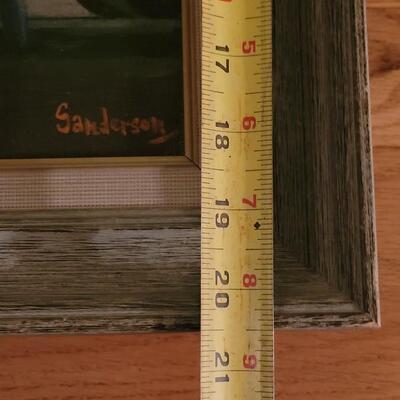
This is a fantastic example from one of the "15 Colorado Artist", William Sanderson. This artwork is open to National Bidding with packing and shipping through UPS. Sotheby's sold one of William Sanderson's oil painting in the last few years for over $16,000. Since his passing his work has risen in value. This piece is special for Colorado because of the rich Railroad history that is so much a part of this state. Through research, this piece also differs because Railroad themes were not a reoccurring theme in his work. A little background from Excerpts: William Sanderson (whose birth name was Wilhelm Tsiegelnitsky) was born August 4, 1905 in Dubbeln, Latvia, near Riga and at that time part of the Russian Empire. ... In 1948 Sanderson became a founding member of the 15 Colorado Artists who broke from the more traditional Denver Artists Guild. Excerpt: In the summer of 1943 he had his first solo exhibition in Colorado at the Denver Art Museum-Chappell House that consisted of black-and-white drawings of Army life. He also began painting watercolor scenes from memory of his previous life in the East. His two visits to Vance Kirkland’s studio in Denver’s Capitol Hill neighborhood, while stationed at Lowry, occasioned a lifelong friendship and professional association. On Sanderson’s excursion in 1943 to the Colorado Springs Fine Arts Center he met his future wife, Ruth Lambertson from Cedar Falls, Iowa, whom he married eight weeks later, initiating a union lasting forty-seven years. His fluency in Russian landed him an assignment as an interpreter with the American ground forces meeting up with the Soviet Army marching westward toward Berlin in the last months of World War II. His impressions and photos of the bombed-out city formed the basis of his montage, Berlin 1945, painted in Denver in 1947. Its palette and collage-like quality and that of some of his other paintings from this period reflect the influence of American modernist, Stuart Davis. Following his military discharge and some brief design work for the Kistler Stationery Company and the A.B. Hirschfeld Press in Denver, Sanderson swapped commercial art for academia in 1946 when Vance Kirkland hired him as Assistant Professor of Advertising Design at the University of Denver, which subject he taught until retiring in 1972. Along with Kirkland and other faculty artists, he became a charter member of the 15 Colorado Artists. Founded in 1948, the group comprised some of the state’s leading contemporary artists seeking to distance themselves from much of the traditional imagery then being produced and exhibited in Denver and elsewhere. Reflecting the viewpoint of his fellow charter members Sanderson said, “I’m very taken with the nature scenes in this region, but it’s not the function of the artist to paint them when there are photographers around.†Paraphrasing Picasso, the leading representative of contemporary art at that time, he added: “The painting is the artist’s representation of what nature is not.†The financial security and stability of his teaching position at the University of Denver (DU) gave him the freedom to develop his easel painting. He produced a large body of oils and watercolors in both stylized realism and surrealism depicting, respectively, Colorado-inspired subject matter and social criticism of modern life and industrial civilization. One of his first canvases, Steamship Ruth, titled in honor of his wife and incorporating elements remembered from the port of Rostov in Russia has large, precisely-arranged areas of flat color with crisp edges seen in many of his Colorado paintings in the 1950s and 1960s. Similarly, Mountain Rhythm employs a bright palette and undulating lines, conveying his fascination with the overall composition of irregular mountain and cloud shapes. Trailer Park near the foothills west of Denver, provided abundant material for a geometric form study, while Composition with Fried Eggs in the Denver Art Museum’s collection essentially is a semi-cubistic arrangement of interlocking planes and spaces that was reproduced in the August 25, 1952, issue of Time Magazine. His work was also shown in group exhibitions outside Colorado at the Dallas Fine Art Museum, Museum of New Mexico (now, New Mexico Museum of Art) in Santa Fe, Joslyn Memorial Museum in Omaha, San Francisco Art Association, Salt Lake City Art Center and the Cedar City Art Museum Association in Utah. The positive notice accorded his work in the early fifties earned him a commission from the Ford Motor Company to illustrate an article, Fort Garland, by Marshall Sprague in the June 1954 issue of Ford Times. (Similar commissions were also given at that time to Denver’s Vance Kirkland and Richard Sorby.) ☆☆☆☆☆☆ Quotes of Sanderson: I’ve done hard-edge paintings because I was always interested in typography and shapes and forms but then I finally decided I wanted to make…a record of things before they are completely inundated by shopping centers, highways and pizza parlors….The isolation, the loneliness of life on the plains is not that dissimilar from the isolation and loneliness one feels living in New York City. His output assumed a more regionalist style as his new environment challenged him to paint the broad panorama of Colorado’s high plains dominated by the sky, clouds, seasonal changes, windmills and ranches. In the process, he took on the “myth of the West†with his own brand of humor and irreverence: I have a dislike for what usually passes as Western art…It’s terribly repetitious. Most of it is just an imitation of what Russell and Remington did…What I’ve painted about the West is not reality; I’ve painted the West as it never was and I know it. I’ve taken the romantic, wild image – bad men, shootouts in the street – done it in an exaggerated style. Some of the subject matter are clichés – and worn out clichés at that. But I’m not mocking the West so much as I’m exaggerating it. 2175 / 2244 -
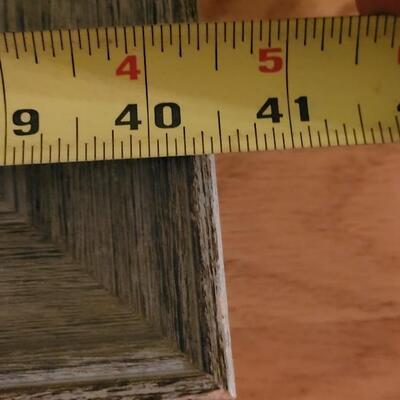
This is a fantastic example from one of the "15 Colorado Artist", William Sanderson. This artwork is open to National Bidding with packing and shipping through UPS. Sotheby's sold one of William Sanderson's oil painting in the last few years for over $16,000. Since his passing his work has risen in value. This piece is special for Colorado because of the rich Railroad history that is so much a part of this state. Through research, this piece also differs because Railroad themes were not a reoccurring theme in his work. A little background from Excerpts: William Sanderson (whose birth name was Wilhelm Tsiegelnitsky) was born August 4, 1905 in Dubbeln, Latvia, near Riga and at that time part of the Russian Empire. ... In 1948 Sanderson became a founding member of the 15 Colorado Artists who broke from the more traditional Denver Artists Guild. Excerpt: In the summer of 1943 he had his first solo exhibition in Colorado at the Denver Art Museum-Chappell House that consisted of black-and-white drawings of Army life. He also began painting watercolor scenes from memory of his previous life in the East. His two visits to Vance Kirkland’s studio in Denver’s Capitol Hill neighborhood, while stationed at Lowry, occasioned a lifelong friendship and professional association. On Sanderson’s excursion in 1943 to the Colorado Springs Fine Arts Center he met his future wife, Ruth Lambertson from Cedar Falls, Iowa, whom he married eight weeks later, initiating a union lasting forty-seven years. His fluency in Russian landed him an assignment as an interpreter with the American ground forces meeting up with the Soviet Army marching westward toward Berlin in the last months of World War II. His impressions and photos of the bombed-out city formed the basis of his montage, Berlin 1945, painted in Denver in 1947. Its palette and collage-like quality and that of some of his other paintings from this period reflect the influence of American modernist, Stuart Davis. Following his military discharge and some brief design work for the Kistler Stationery Company and the A.B. Hirschfeld Press in Denver, Sanderson swapped commercial art for academia in 1946 when Vance Kirkland hired him as Assistant Professor of Advertising Design at the University of Denver, which subject he taught until retiring in 1972. Along with Kirkland and other faculty artists, he became a charter member of the 15 Colorado Artists. Founded in 1948, the group comprised some of the state’s leading contemporary artists seeking to distance themselves from much of the traditional imagery then being produced and exhibited in Denver and elsewhere. Reflecting the viewpoint of his fellow charter members Sanderson said, “I’m very taken with the nature scenes in this region, but it’s not the function of the artist to paint them when there are photographers around.†Paraphrasing Picasso, the leading representative of contemporary art at that time, he added: “The painting is the artist’s representation of what nature is not.†The financial security and stability of his teaching position at the University of Denver (DU) gave him the freedom to develop his easel painting. He produced a large body of oils and watercolors in both stylized realism and surrealism depicting, respectively, Colorado-inspired subject matter and social criticism of modern life and industrial civilization. One of his first canvases, Steamship Ruth, titled in honor of his wife and incorporating elements remembered from the port of Rostov in Russia has large, precisely-arranged areas of flat color with crisp edges seen in many of his Colorado paintings in the 1950s and 1960s. Similarly, Mountain Rhythm employs a bright palette and undulating lines, conveying his fascination with the overall composition of irregular mountain and cloud shapes. Trailer Park near the foothills west of Denver, provided abundant material for a geometric form study, while Composition with Fried Eggs in the Denver Art Museum’s collection essentially is a semi-cubistic arrangement of interlocking planes and spaces that was reproduced in the August 25, 1952, issue of Time Magazine. His work was also shown in group exhibitions outside Colorado at the Dallas Fine Art Museum, Museum of New Mexico (now, New Mexico Museum of Art) in Santa Fe, Joslyn Memorial Museum in Omaha, San Francisco Art Association, Salt Lake City Art Center and the Cedar City Art Museum Association in Utah. The positive notice accorded his work in the early fifties earned him a commission from the Ford Motor Company to illustrate an article, Fort Garland, by Marshall Sprague in the June 1954 issue of Ford Times. (Similar commissions were also given at that time to Denver’s Vance Kirkland and Richard Sorby.) ☆☆☆☆☆☆ Quotes of Sanderson: I’ve done hard-edge paintings because I was always interested in typography and shapes and forms but then I finally decided I wanted to make…a record of things before they are completely inundated by shopping centers, highways and pizza parlors….The isolation, the loneliness of life on the plains is not that dissimilar from the isolation and loneliness one feels living in New York City. His output assumed a more regionalist style as his new environment challenged him to paint the broad panorama of Colorado’s high plains dominated by the sky, clouds, seasonal changes, windmills and ranches. In the process, he took on the “myth of the West†with his own brand of humor and irreverence: I have a dislike for what usually passes as Western art…It’s terribly repetitious. Most of it is just an imitation of what Russell and Remington did…What I’ve painted about the West is not reality; I’ve painted the West as it never was and I know it. I’ve taken the romantic, wild image – bad men, shootouts in the street – done it in an exaggerated style. Some of the subject matter are clichés – and worn out clichés at that. But I’m not mocking the West so much as I’m exaggerating it. 2176 / 2244 -
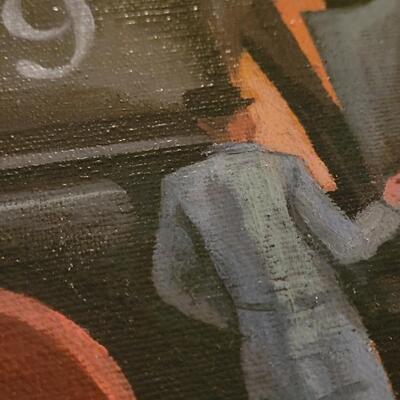
This is a fantastic example from one of the "15 Colorado Artist", William Sanderson. This artwork is open to National Bidding with packing and shipping through UPS. Sotheby's sold one of William Sanderson's oil painting in the last few years for over $16,000. Since his passing his work has risen in value. This piece is special for Colorado because of the rich Railroad history that is so much a part of this state. Through research, this piece also differs because Railroad themes were not a reoccurring theme in his work. A little background from Excerpts: William Sanderson (whose birth name was Wilhelm Tsiegelnitsky) was born August 4, 1905 in Dubbeln, Latvia, near Riga and at that time part of the Russian Empire. ... In 1948 Sanderson became a founding member of the 15 Colorado Artists who broke from the more traditional Denver Artists Guild. Excerpt: In the summer of 1943 he had his first solo exhibition in Colorado at the Denver Art Museum-Chappell House that consisted of black-and-white drawings of Army life. He also began painting watercolor scenes from memory of his previous life in the East. His two visits to Vance Kirkland’s studio in Denver’s Capitol Hill neighborhood, while stationed at Lowry, occasioned a lifelong friendship and professional association. On Sanderson’s excursion in 1943 to the Colorado Springs Fine Arts Center he met his future wife, Ruth Lambertson from Cedar Falls, Iowa, whom he married eight weeks later, initiating a union lasting forty-seven years. His fluency in Russian landed him an assignment as an interpreter with the American ground forces meeting up with the Soviet Army marching westward toward Berlin in the last months of World War II. His impressions and photos of the bombed-out city formed the basis of his montage, Berlin 1945, painted in Denver in 1947. Its palette and collage-like quality and that of some of his other paintings from this period reflect the influence of American modernist, Stuart Davis. Following his military discharge and some brief design work for the Kistler Stationery Company and the A.B. Hirschfeld Press in Denver, Sanderson swapped commercial art for academia in 1946 when Vance Kirkland hired him as Assistant Professor of Advertising Design at the University of Denver, which subject he taught until retiring in 1972. Along with Kirkland and other faculty artists, he became a charter member of the 15 Colorado Artists. Founded in 1948, the group comprised some of the state’s leading contemporary artists seeking to distance themselves from much of the traditional imagery then being produced and exhibited in Denver and elsewhere. Reflecting the viewpoint of his fellow charter members Sanderson said, “I’m very taken with the nature scenes in this region, but it’s not the function of the artist to paint them when there are photographers around.†Paraphrasing Picasso, the leading representative of contemporary art at that time, he added: “The painting is the artist’s representation of what nature is not.†The financial security and stability of his teaching position at the University of Denver (DU) gave him the freedom to develop his easel painting. He produced a large body of oils and watercolors in both stylized realism and surrealism depicting, respectively, Colorado-inspired subject matter and social criticism of modern life and industrial civilization. One of his first canvases, Steamship Ruth, titled in honor of his wife and incorporating elements remembered from the port of Rostov in Russia has large, precisely-arranged areas of flat color with crisp edges seen in many of his Colorado paintings in the 1950s and 1960s. Similarly, Mountain Rhythm employs a bright palette and undulating lines, conveying his fascination with the overall composition of irregular mountain and cloud shapes. Trailer Park near the foothills west of Denver, provided abundant material for a geometric form study, while Composition with Fried Eggs in the Denver Art Museum’s collection essentially is a semi-cubistic arrangement of interlocking planes and spaces that was reproduced in the August 25, 1952, issue of Time Magazine. His work was also shown in group exhibitions outside Colorado at the Dallas Fine Art Museum, Museum of New Mexico (now, New Mexico Museum of Art) in Santa Fe, Joslyn Memorial Museum in Omaha, San Francisco Art Association, Salt Lake City Art Center and the Cedar City Art Museum Association in Utah. The positive notice accorded his work in the early fifties earned him a commission from the Ford Motor Company to illustrate an article, Fort Garland, by Marshall Sprague in the June 1954 issue of Ford Times. (Similar commissions were also given at that time to Denver’s Vance Kirkland and Richard Sorby.) ☆☆☆☆☆☆ Quotes of Sanderson: I’ve done hard-edge paintings because I was always interested in typography and shapes and forms but then I finally decided I wanted to make…a record of things before they are completely inundated by shopping centers, highways and pizza parlors….The isolation, the loneliness of life on the plains is not that dissimilar from the isolation and loneliness one feels living in New York City. His output assumed a more regionalist style as his new environment challenged him to paint the broad panorama of Colorado’s high plains dominated by the sky, clouds, seasonal changes, windmills and ranches. In the process, he took on the “myth of the West†with his own brand of humor and irreverence: I have a dislike for what usually passes as Western art…It’s terribly repetitious. Most of it is just an imitation of what Russell and Remington did…What I’ve painted about the West is not reality; I’ve painted the West as it never was and I know it. I’ve taken the romantic, wild image – bad men, shootouts in the street – done it in an exaggerated style. Some of the subject matter are clichés – and worn out clichés at that. But I’m not mocking the West so much as I’m exaggerating it. 2177 / 2244 -
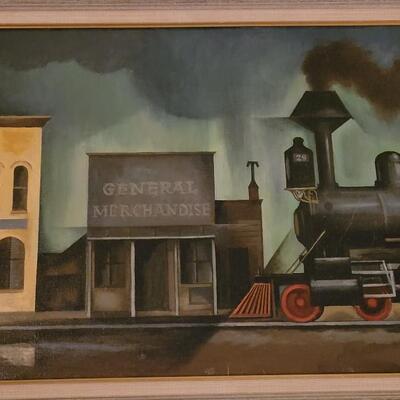
This is a fantastic example from one of the "15 Colorado Artist", William Sanderson. This artwork is open to National Bidding with packing and shipping through UPS. Sotheby's sold one of William Sanderson's oil painting in the last few years for over $16,000. Since his passing his work has risen in value. This piece is special for Colorado because of the rich Railroad history that is so much a part of this state. Through research, this piece also differs because Railroad themes were not a reoccurring theme in his work. A little background from Excerpts: William Sanderson (whose birth name was Wilhelm Tsiegelnitsky) was born August 4, 1905 in Dubbeln, Latvia, near Riga and at that time part of the Russian Empire. ... In 1948 Sanderson became a founding member of the 15 Colorado Artists who broke from the more traditional Denver Artists Guild. Excerpt: In the summer of 1943 he had his first solo exhibition in Colorado at the Denver Art Museum-Chappell House that consisted of black-and-white drawings of Army life. He also began painting watercolor scenes from memory of his previous life in the East. His two visits to Vance Kirkland’s studio in Denver’s Capitol Hill neighborhood, while stationed at Lowry, occasioned a lifelong friendship and professional association. On Sanderson’s excursion in 1943 to the Colorado Springs Fine Arts Center he met his future wife, Ruth Lambertson from Cedar Falls, Iowa, whom he married eight weeks later, initiating a union lasting forty-seven years. His fluency in Russian landed him an assignment as an interpreter with the American ground forces meeting up with the Soviet Army marching westward toward Berlin in the last months of World War II. His impressions and photos of the bombed-out city formed the basis of his montage, Berlin 1945, painted in Denver in 1947. Its palette and collage-like quality and that of some of his other paintings from this period reflect the influence of American modernist, Stuart Davis. Following his military discharge and some brief design work for the Kistler Stationery Company and the A.B. Hirschfeld Press in Denver, Sanderson swapped commercial art for academia in 1946 when Vance Kirkland hired him as Assistant Professor of Advertising Design at the University of Denver, which subject he taught until retiring in 1972. Along with Kirkland and other faculty artists, he became a charter member of the 15 Colorado Artists. Founded in 1948, the group comprised some of the state’s leading contemporary artists seeking to distance themselves from much of the traditional imagery then being produced and exhibited in Denver and elsewhere. Reflecting the viewpoint of his fellow charter members Sanderson said, “I’m very taken with the nature scenes in this region, but it’s not the function of the artist to paint them when there are photographers around.†Paraphrasing Picasso, the leading representative of contemporary art at that time, he added: “The painting is the artist’s representation of what nature is not.†The financial security and stability of his teaching position at the University of Denver (DU) gave him the freedom to develop his easel painting. He produced a large body of oils and watercolors in both stylized realism and surrealism depicting, respectively, Colorado-inspired subject matter and social criticism of modern life and industrial civilization. One of his first canvases, Steamship Ruth, titled in honor of his wife and incorporating elements remembered from the port of Rostov in Russia has large, precisely-arranged areas of flat color with crisp edges seen in many of his Colorado paintings in the 1950s and 1960s. Similarly, Mountain Rhythm employs a bright palette and undulating lines, conveying his fascination with the overall composition of irregular mountain and cloud shapes. Trailer Park near the foothills west of Denver, provided abundant material for a geometric form study, while Composition with Fried Eggs in the Denver Art Museum’s collection essentially is a semi-cubistic arrangement of interlocking planes and spaces that was reproduced in the August 25, 1952, issue of Time Magazine. His work was also shown in group exhibitions outside Colorado at the Dallas Fine Art Museum, Museum of New Mexico (now, New Mexico Museum of Art) in Santa Fe, Joslyn Memorial Museum in Omaha, San Francisco Art Association, Salt Lake City Art Center and the Cedar City Art Museum Association in Utah. The positive notice accorded his work in the early fifties earned him a commission from the Ford Motor Company to illustrate an article, Fort Garland, by Marshall Sprague in the June 1954 issue of Ford Times. (Similar commissions were also given at that time to Denver’s Vance Kirkland and Richard Sorby.) ☆☆☆☆☆☆ Quotes of Sanderson: I’ve done hard-edge paintings because I was always interested in typography and shapes and forms but then I finally decided I wanted to make…a record of things before they are completely inundated by shopping centers, highways and pizza parlors….The isolation, the loneliness of life on the plains is not that dissimilar from the isolation and loneliness one feels living in New York City. His output assumed a more regionalist style as his new environment challenged him to paint the broad panorama of Colorado’s high plains dominated by the sky, clouds, seasonal changes, windmills and ranches. In the process, he took on the “myth of the West†with his own brand of humor and irreverence: I have a dislike for what usually passes as Western art…It’s terribly repetitious. Most of it is just an imitation of what Russell and Remington did…What I’ve painted about the West is not reality; I’ve painted the West as it never was and I know it. I’ve taken the romantic, wild image – bad men, shootouts in the street – done it in an exaggerated style. Some of the subject matter are clichés – and worn out clichés at that. But I’m not mocking the West so much as I’m exaggerating it. 2178 / 2244 -
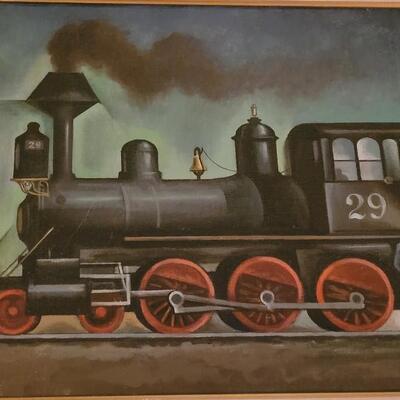
This is a fantastic example from one of the "15 Colorado Artist", William Sanderson. This artwork is open to National Bidding with packing and shipping through UPS. Sotheby's sold one of William Sanderson's oil painting in the last few years for over $16,000. Since his passing his work has risen in value. This piece is special for Colorado because of the rich Railroad history that is so much a part of this state. Through research, this piece also differs because Railroad themes were not a reoccurring theme in his work. A little background from Excerpts: William Sanderson (whose birth name was Wilhelm Tsiegelnitsky) was born August 4, 1905 in Dubbeln, Latvia, near Riga and at that time part of the Russian Empire. ... In 1948 Sanderson became a founding member of the 15 Colorado Artists who broke from the more traditional Denver Artists Guild. Excerpt: In the summer of 1943 he had his first solo exhibition in Colorado at the Denver Art Museum-Chappell House that consisted of black-and-white drawings of Army life. He also began painting watercolor scenes from memory of his previous life in the East. His two visits to Vance Kirkland’s studio in Denver’s Capitol Hill neighborhood, while stationed at Lowry, occasioned a lifelong friendship and professional association. On Sanderson’s excursion in 1943 to the Colorado Springs Fine Arts Center he met his future wife, Ruth Lambertson from Cedar Falls, Iowa, whom he married eight weeks later, initiating a union lasting forty-seven years. His fluency in Russian landed him an assignment as an interpreter with the American ground forces meeting up with the Soviet Army marching westward toward Berlin in the last months of World War II. His impressions and photos of the bombed-out city formed the basis of his montage, Berlin 1945, painted in Denver in 1947. Its palette and collage-like quality and that of some of his other paintings from this period reflect the influence of American modernist, Stuart Davis. Following his military discharge and some brief design work for the Kistler Stationery Company and the A.B. Hirschfeld Press in Denver, Sanderson swapped commercial art for academia in 1946 when Vance Kirkland hired him as Assistant Professor of Advertising Design at the University of Denver, which subject he taught until retiring in 1972. Along with Kirkland and other faculty artists, he became a charter member of the 15 Colorado Artists. Founded in 1948, the group comprised some of the state’s leading contemporary artists seeking to distance themselves from much of the traditional imagery then being produced and exhibited in Denver and elsewhere. Reflecting the viewpoint of his fellow charter members Sanderson said, “I’m very taken with the nature scenes in this region, but it’s not the function of the artist to paint them when there are photographers around.†Paraphrasing Picasso, the leading representative of contemporary art at that time, he added: “The painting is the artist’s representation of what nature is not.†The financial security and stability of his teaching position at the University of Denver (DU) gave him the freedom to develop his easel painting. He produced a large body of oils and watercolors in both stylized realism and surrealism depicting, respectively, Colorado-inspired subject matter and social criticism of modern life and industrial civilization. One of his first canvases, Steamship Ruth, titled in honor of his wife and incorporating elements remembered from the port of Rostov in Russia has large, precisely-arranged areas of flat color with crisp edges seen in many of his Colorado paintings in the 1950s and 1960s. Similarly, Mountain Rhythm employs a bright palette and undulating lines, conveying his fascination with the overall composition of irregular mountain and cloud shapes. Trailer Park near the foothills west of Denver, provided abundant material for a geometric form study, while Composition with Fried Eggs in the Denver Art Museum’s collection essentially is a semi-cubistic arrangement of interlocking planes and spaces that was reproduced in the August 25, 1952, issue of Time Magazine. His work was also shown in group exhibitions outside Colorado at the Dallas Fine Art Museum, Museum of New Mexico (now, New Mexico Museum of Art) in Santa Fe, Joslyn Memorial Museum in Omaha, San Francisco Art Association, Salt Lake City Art Center and the Cedar City Art Museum Association in Utah. The positive notice accorded his work in the early fifties earned him a commission from the Ford Motor Company to illustrate an article, Fort Garland, by Marshall Sprague in the June 1954 issue of Ford Times. (Similar commissions were also given at that time to Denver’s Vance Kirkland and Richard Sorby.) ☆☆☆☆☆☆ Quotes of Sanderson: I’ve done hard-edge paintings because I was always interested in typography and shapes and forms but then I finally decided I wanted to make…a record of things before they are completely inundated by shopping centers, highways and pizza parlors….The isolation, the loneliness of life on the plains is not that dissimilar from the isolation and loneliness one feels living in New York City. His output assumed a more regionalist style as his new environment challenged him to paint the broad panorama of Colorado’s high plains dominated by the sky, clouds, seasonal changes, windmills and ranches. In the process, he took on the “myth of the West†with his own brand of humor and irreverence: I have a dislike for what usually passes as Western art…It’s terribly repetitious. Most of it is just an imitation of what Russell and Remington did…What I’ve painted about the West is not reality; I’ve painted the West as it never was and I know it. I’ve taken the romantic, wild image – bad men, shootouts in the street – done it in an exaggerated style. Some of the subject matter are clichés – and worn out clichés at that. But I’m not mocking the West so much as I’m exaggerating it. 2179 / 2244 -
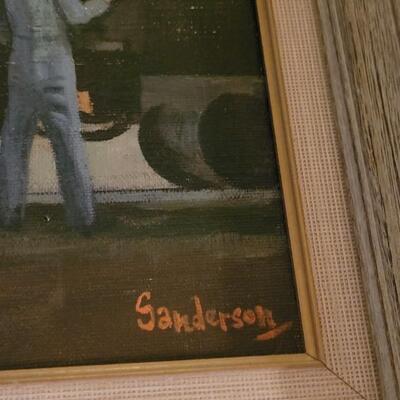
This is a fantastic example from one of the "15 Colorado Artist", William Sanderson. This artwork is open to National Bidding with packing and shipping through UPS. Sotheby's sold one of William Sanderson's oil painting in the last few years for over $16,000. Since his passing his work has risen in value. This piece is special for Colorado because of the rich Railroad history that is so much a part of this state. Through research, this piece also differs because Railroad themes were not a reoccurring theme in his work. A little background from Excerpts: William Sanderson (whose birth name was Wilhelm Tsiegelnitsky) was born August 4, 1905 in Dubbeln, Latvia, near Riga and at that time part of the Russian Empire. ... In 1948 Sanderson became a founding member of the 15 Colorado Artists who broke from the more traditional Denver Artists Guild. Excerpt: In the summer of 1943 he had his first solo exhibition in Colorado at the Denver Art Museum-Chappell House that consisted of black-and-white drawings of Army life. He also began painting watercolor scenes from memory of his previous life in the East. His two visits to Vance Kirkland’s studio in Denver’s Capitol Hill neighborhood, while stationed at Lowry, occasioned a lifelong friendship and professional association. On Sanderson’s excursion in 1943 to the Colorado Springs Fine Arts Center he met his future wife, Ruth Lambertson from Cedar Falls, Iowa, whom he married eight weeks later, initiating a union lasting forty-seven years. His fluency in Russian landed him an assignment as an interpreter with the American ground forces meeting up with the Soviet Army marching westward toward Berlin in the last months of World War II. His impressions and photos of the bombed-out city formed the basis of his montage, Berlin 1945, painted in Denver in 1947. Its palette and collage-like quality and that of some of his other paintings from this period reflect the influence of American modernist, Stuart Davis. Following his military discharge and some brief design work for the Kistler Stationery Company and the A.B. Hirschfeld Press in Denver, Sanderson swapped commercial art for academia in 1946 when Vance Kirkland hired him as Assistant Professor of Advertising Design at the University of Denver, which subject he taught until retiring in 1972. Along with Kirkland and other faculty artists, he became a charter member of the 15 Colorado Artists. Founded in 1948, the group comprised some of the state’s leading contemporary artists seeking to distance themselves from much of the traditional imagery then being produced and exhibited in Denver and elsewhere. Reflecting the viewpoint of his fellow charter members Sanderson said, “I’m very taken with the nature scenes in this region, but it’s not the function of the artist to paint them when there are photographers around.†Paraphrasing Picasso, the leading representative of contemporary art at that time, he added: “The painting is the artist’s representation of what nature is not.†The financial security and stability of his teaching position at the University of Denver (DU) gave him the freedom to develop his easel painting. He produced a large body of oils and watercolors in both stylized realism and surrealism depicting, respectively, Colorado-inspired subject matter and social criticism of modern life and industrial civilization. One of his first canvases, Steamship Ruth, titled in honor of his wife and incorporating elements remembered from the port of Rostov in Russia has large, precisely-arranged areas of flat color with crisp edges seen in many of his Colorado paintings in the 1950s and 1960s. Similarly, Mountain Rhythm employs a bright palette and undulating lines, conveying his fascination with the overall composition of irregular mountain and cloud shapes. Trailer Park near the foothills west of Denver, provided abundant material for a geometric form study, while Composition with Fried Eggs in the Denver Art Museum’s collection essentially is a semi-cubistic arrangement of interlocking planes and spaces that was reproduced in the August 25, 1952, issue of Time Magazine. His work was also shown in group exhibitions outside Colorado at the Dallas Fine Art Museum, Museum of New Mexico (now, New Mexico Museum of Art) in Santa Fe, Joslyn Memorial Museum in Omaha, San Francisco Art Association, Salt Lake City Art Center and the Cedar City Art Museum Association in Utah. The positive notice accorded his work in the early fifties earned him a commission from the Ford Motor Company to illustrate an article, Fort Garland, by Marshall Sprague in the June 1954 issue of Ford Times. (Similar commissions were also given at that time to Denver’s Vance Kirkland and Richard Sorby.) ☆☆☆☆☆☆ Quotes of Sanderson: I’ve done hard-edge paintings because I was always interested in typography and shapes and forms but then I finally decided I wanted to make…a record of things before they are completely inundated by shopping centers, highways and pizza parlors….The isolation, the loneliness of life on the plains is not that dissimilar from the isolation and loneliness one feels living in New York City. His output assumed a more regionalist style as his new environment challenged him to paint the broad panorama of Colorado’s high plains dominated by the sky, clouds, seasonal changes, windmills and ranches. In the process, he took on the “myth of the West†with his own brand of humor and irreverence: I have a dislike for what usually passes as Western art…It’s terribly repetitious. Most of it is just an imitation of what Russell and Remington did…What I’ve painted about the West is not reality; I’ve painted the West as it never was and I know it. I’ve taken the romantic, wild image – bad men, shootouts in the street – done it in an exaggerated style. Some of the subject matter are clichés – and worn out clichés at that. But I’m not mocking the West so much as I’m exaggerating it. 2180 / 2244 -
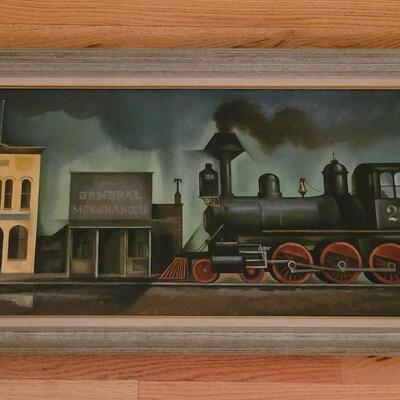
This is a fantastic example from one of the "15 Colorado Artist", William Sanderson. This artwork is open to National Bidding with packing and shipping through UPS. Sotheby's sold one of William Sanderson's oil painting in the last few years for over $16,000. Since his passing his work has risen in value. This piece is special for Colorado because of the rich Railroad history that is so much a part of this state. Through research, this piece also differs because Railroad themes were not a reoccurring theme in his work. A little background from Excerpts: William Sanderson (whose birth name was Wilhelm Tsiegelnitsky) was born August 4, 1905 in Dubbeln, Latvia, near Riga and at that time part of the Russian Empire. ... In 1948 Sanderson became a founding member of the 15 Colorado Artists who broke from the more traditional Denver Artists Guild. Excerpt: In the summer of 1943 he had his first solo exhibition in Colorado at the Denver Art Museum-Chappell House that consisted of black-and-white drawings of Army life. He also began painting watercolor scenes from memory of his previous life in the East. His two visits to Vance Kirkland’s studio in Denver’s Capitol Hill neighborhood, while stationed at Lowry, occasioned a lifelong friendship and professional association. On Sanderson’s excursion in 1943 to the Colorado Springs Fine Arts Center he met his future wife, Ruth Lambertson from Cedar Falls, Iowa, whom he married eight weeks later, initiating a union lasting forty-seven years. His fluency in Russian landed him an assignment as an interpreter with the American ground forces meeting up with the Soviet Army marching westward toward Berlin in the last months of World War II. His impressions and photos of the bombed-out city formed the basis of his montage, Berlin 1945, painted in Denver in 1947. Its palette and collage-like quality and that of some of his other paintings from this period reflect the influence of American modernist, Stuart Davis. Following his military discharge and some brief design work for the Kistler Stationery Company and the A.B. Hirschfeld Press in Denver, Sanderson swapped commercial art for academia in 1946 when Vance Kirkland hired him as Assistant Professor of Advertising Design at the University of Denver, which subject he taught until retiring in 1972. Along with Kirkland and other faculty artists, he became a charter member of the 15 Colorado Artists. Founded in 1948, the group comprised some of the state’s leading contemporary artists seeking to distance themselves from much of the traditional imagery then being produced and exhibited in Denver and elsewhere. Reflecting the viewpoint of his fellow charter members Sanderson said, “I’m very taken with the nature scenes in this region, but it’s not the function of the artist to paint them when there are photographers around.†Paraphrasing Picasso, the leading representative of contemporary art at that time, he added: “The painting is the artist’s representation of what nature is not.†The financial security and stability of his teaching position at the University of Denver (DU) gave him the freedom to develop his easel painting. He produced a large body of oils and watercolors in both stylized realism and surrealism depicting, respectively, Colorado-inspired subject matter and social criticism of modern life and industrial civilization. One of his first canvases, Steamship Ruth, titled in honor of his wife and incorporating elements remembered from the port of Rostov in Russia has large, precisely-arranged areas of flat color with crisp edges seen in many of his Colorado paintings in the 1950s and 1960s. Similarly, Mountain Rhythm employs a bright palette and undulating lines, conveying his fascination with the overall composition of irregular mountain and cloud shapes. Trailer Park near the foothills west of Denver, provided abundant material for a geometric form study, while Composition with Fried Eggs in the Denver Art Museum’s collection essentially is a semi-cubistic arrangement of interlocking planes and spaces that was reproduced in the August 25, 1952, issue of Time Magazine. His work was also shown in group exhibitions outside Colorado at the Dallas Fine Art Museum, Museum of New Mexico (now, New Mexico Museum of Art) in Santa Fe, Joslyn Memorial Museum in Omaha, San Francisco Art Association, Salt Lake City Art Center and the Cedar City Art Museum Association in Utah. The positive notice accorded his work in the early fifties earned him a commission from the Ford Motor Company to illustrate an article, Fort Garland, by Marshall Sprague in the June 1954 issue of Ford Times. (Similar commissions were also given at that time to Denver’s Vance Kirkland and Richard Sorby.) ☆☆☆☆☆☆ Quotes of Sanderson: I’ve done hard-edge paintings because I was always interested in typography and shapes and forms but then I finally decided I wanted to make…a record of things before they are completely inundated by shopping centers, highways and pizza parlors….The isolation, the loneliness of life on the plains is not that dissimilar from the isolation and loneliness one feels living in New York City. His output assumed a more regionalist style as his new environment challenged him to paint the broad panorama of Colorado’s high plains dominated by the sky, clouds, seasonal changes, windmills and ranches. In the process, he took on the “myth of the West†with his own brand of humor and irreverence: I have a dislike for what usually passes as Western art…It’s terribly repetitious. Most of it is just an imitation of what Russell and Remington did…What I’ve painted about the West is not reality; I’ve painted the West as it never was and I know it. I’ve taken the romantic, wild image – bad men, shootouts in the street – done it in an exaggerated style. Some of the subject matter are clichés – and worn out clichés at that. But I’m not mocking the West so much as I’m exaggerating it. 2181 / 2244 -
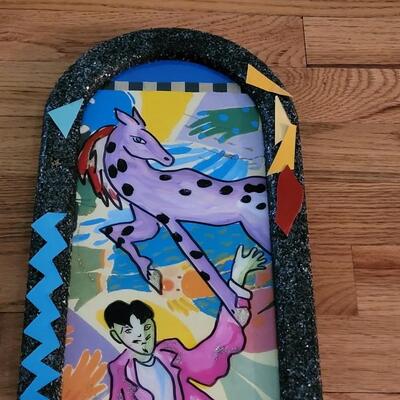
28" × 8" Excerpt: About Louis Recchia I've been doing contemporary art in the Denver area for over thirty years. Over the years, my paintings have been shown in many places including the Museum of Modern Art in Vienna and the Brooklyn Museum in New York. My work explores themes such as vulnerability and innocence lost, and is included in many public collections ranging from the Denver Art Museum to the Absolut Vodka corporate collection. 2190 / 2244 sold -
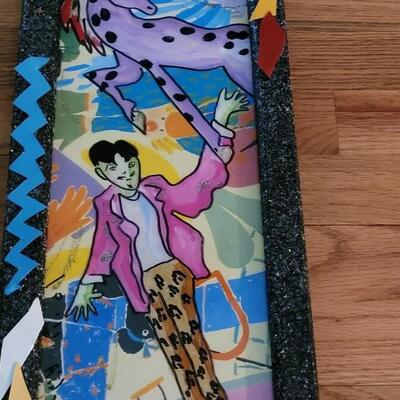
28" × 8" Excerpt: About Louis Recchia I've been doing contemporary art in the Denver area for over thirty years. Over the years, my paintings have been shown in many places including the Museum of Modern Art in Vienna and the Brooklyn Museum in New York. My work explores themes such as vulnerability and innocence lost, and is included in many public collections ranging from the Denver Art Museum to the Absolut Vodka corporate collection. 2191 / 2244 sold -
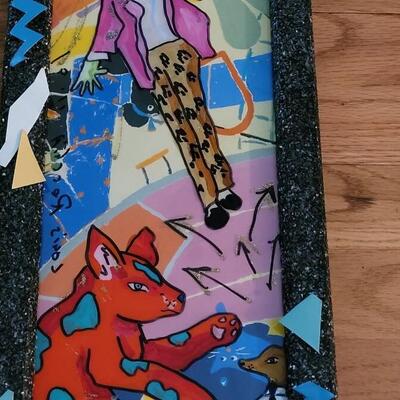
28" × 8" Excerpt: About Louis Recchia I've been doing contemporary art in the Denver area for over thirty years. Over the years, my paintings have been shown in many places including the Museum of Modern Art in Vienna and the Brooklyn Museum in New York. My work explores themes such as vulnerability and innocence lost, and is included in many public collections ranging from the Denver Art Museum to the Absolut Vodka corporate collection. 2192 / 2244 sold -
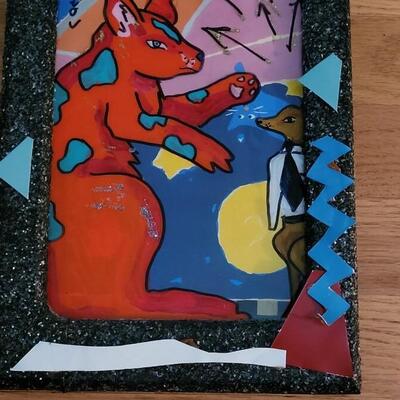
28" × 8" Excerpt: About Louis Recchia I've been doing contemporary art in the Denver area for over thirty years. Over the years, my paintings have been shown in many places including the Museum of Modern Art in Vienna and the Brooklyn Museum in New York. My work explores themes such as vulnerability and innocence lost, and is included in many public collections ranging from the Denver Art Museum to the Absolut Vodka corporate collection. 2193 / 2244 sold -
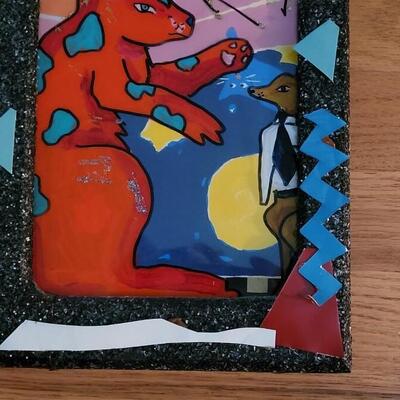
28" × 8" Excerpt: About Louis Recchia I've been doing contemporary art in the Denver area for over thirty years. Over the years, my paintings have been shown in many places including the Museum of Modern Art in Vienna and the Brooklyn Museum in New York. My work explores themes such as vulnerability and innocence lost, and is included in many public collections ranging from the Denver Art Museum to the Absolut Vodka corporate collection. 2194 / 2244 sold -
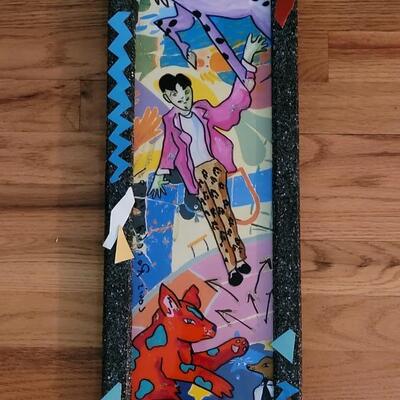
28" × 8" Excerpt: About Louis Recchia I've been doing contemporary art in the Denver area for over thirty years. Over the years, my paintings have been shown in many places including the Museum of Modern Art in Vienna and the Brooklyn Museum in New York. My work explores themes such as vulnerability and innocence lost, and is included in many public collections ranging from the Denver Art Museum to the Absolut Vodka corporate collection. 2195 / 2244 sold -
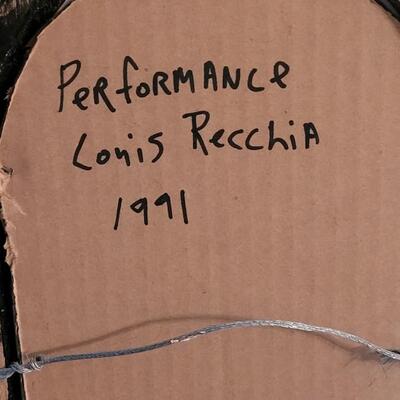
28" × 8" Excerpt: About Louis Recchia I've been doing contemporary art in the Denver area for over thirty years. Over the years, my paintings have been shown in many places including the Museum of Modern Art in Vienna and the Brooklyn Museum in New York. My work explores themes such as vulnerability and innocence lost, and is included in many public collections ranging from the Denver Art Museum to the Absolut Vodka corporate collection. 2196 / 2244 sold -
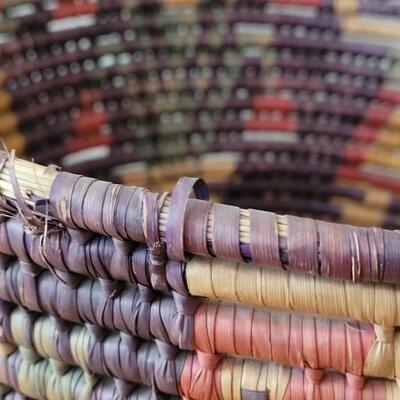
Bottom needs to be repaired. 2197 / 2244 sold -
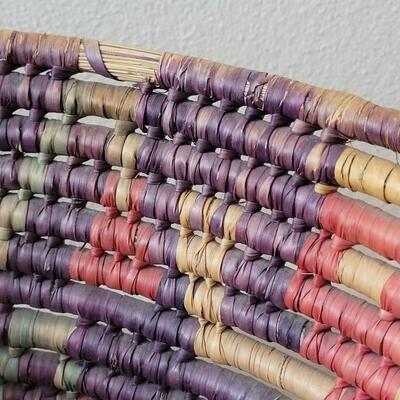
Bottom needs to be repaired. 2198 / 2244 sold -
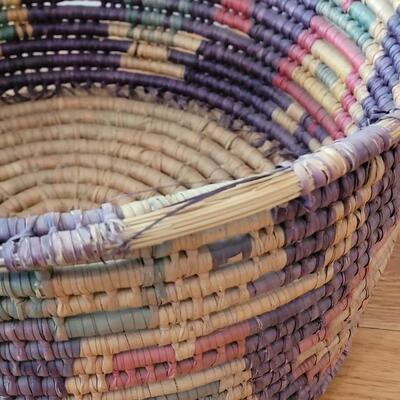
Bottom needs to be repaired. 2199 / 2244 sold -
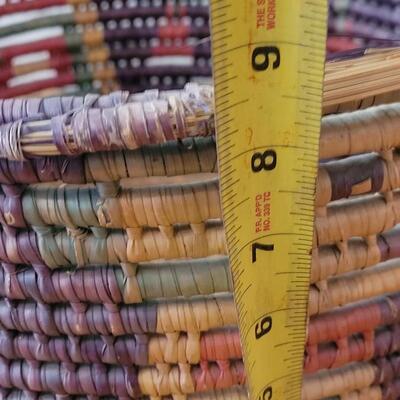
Bottom needs to be repaired. 2200 / 2244 sold
Photos 2101 - 2200 of 2244
Per page:
